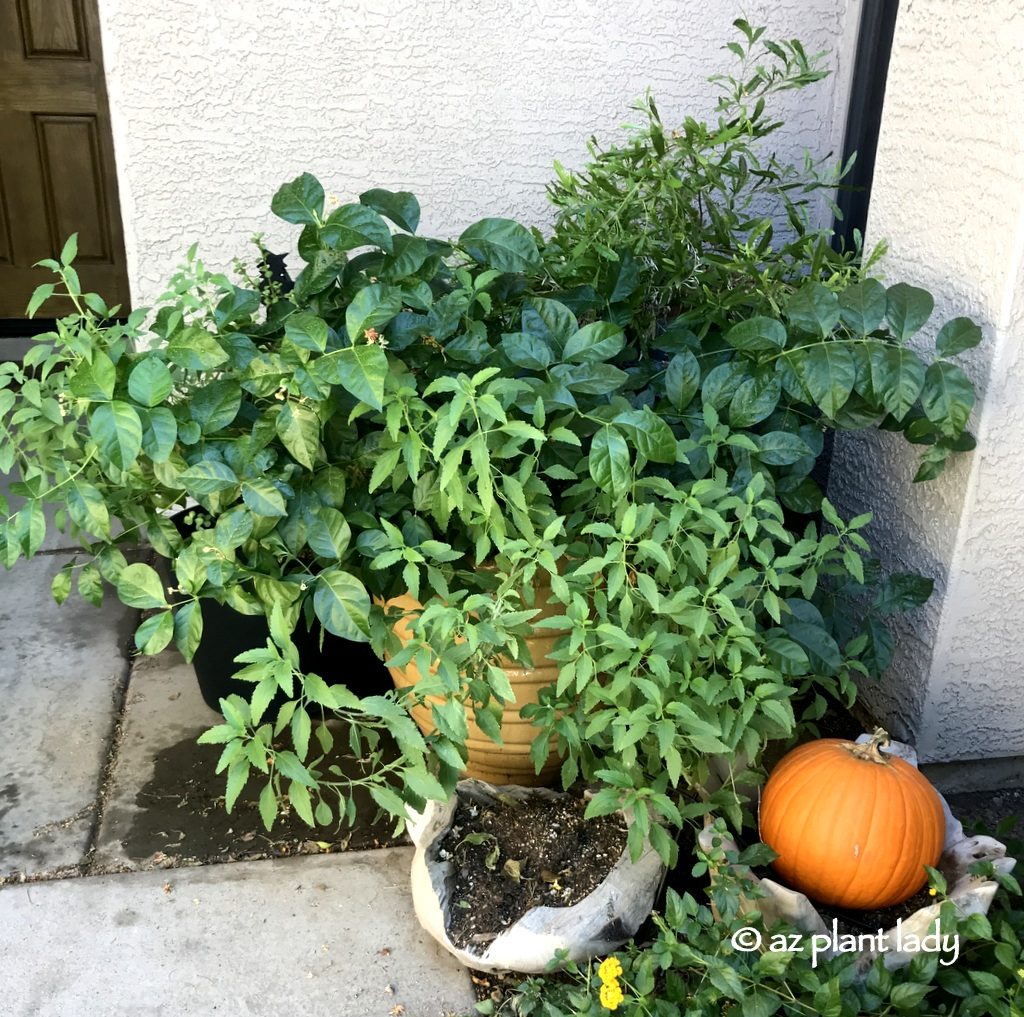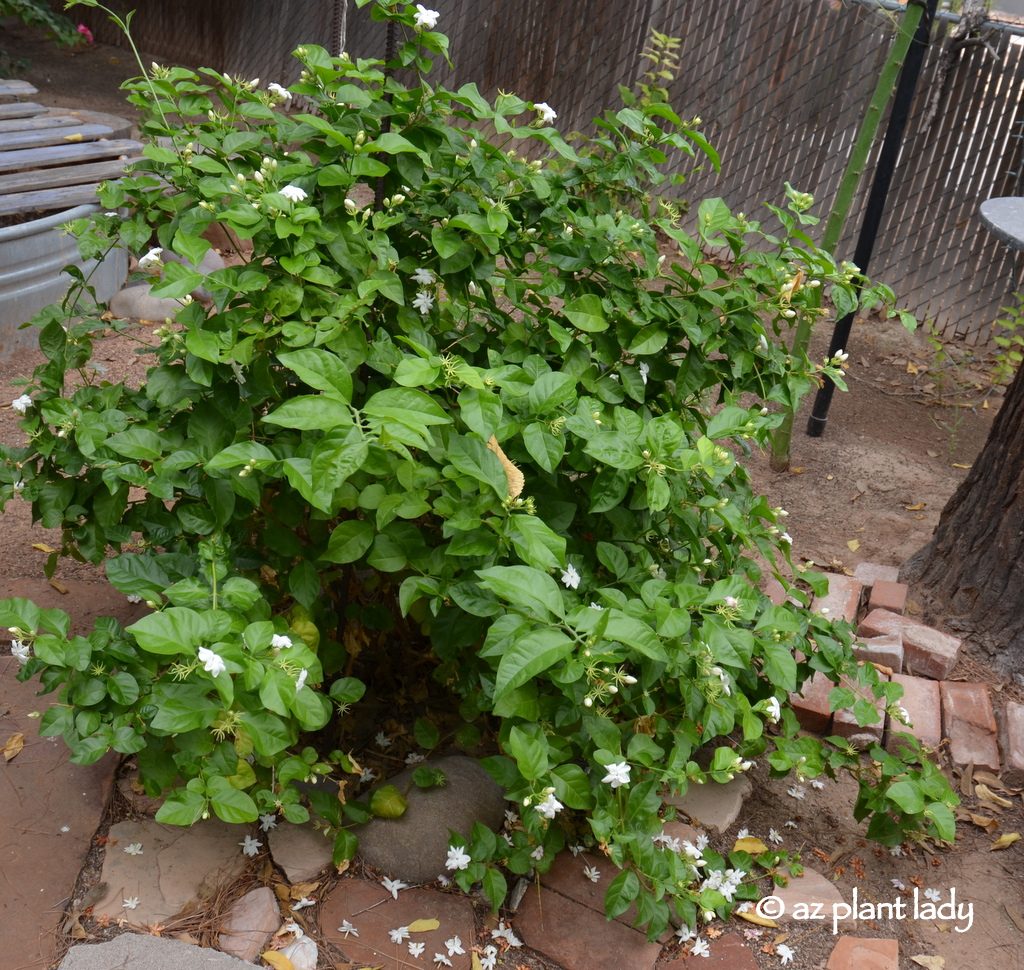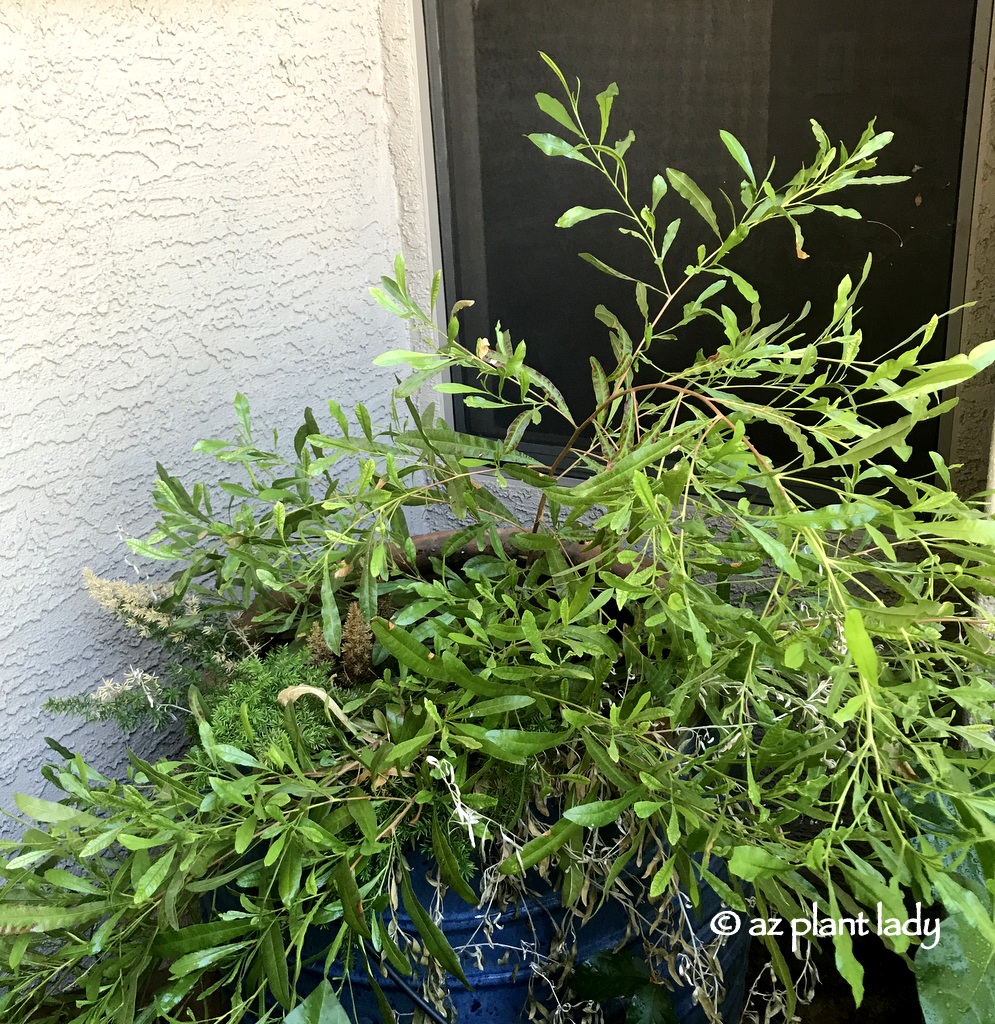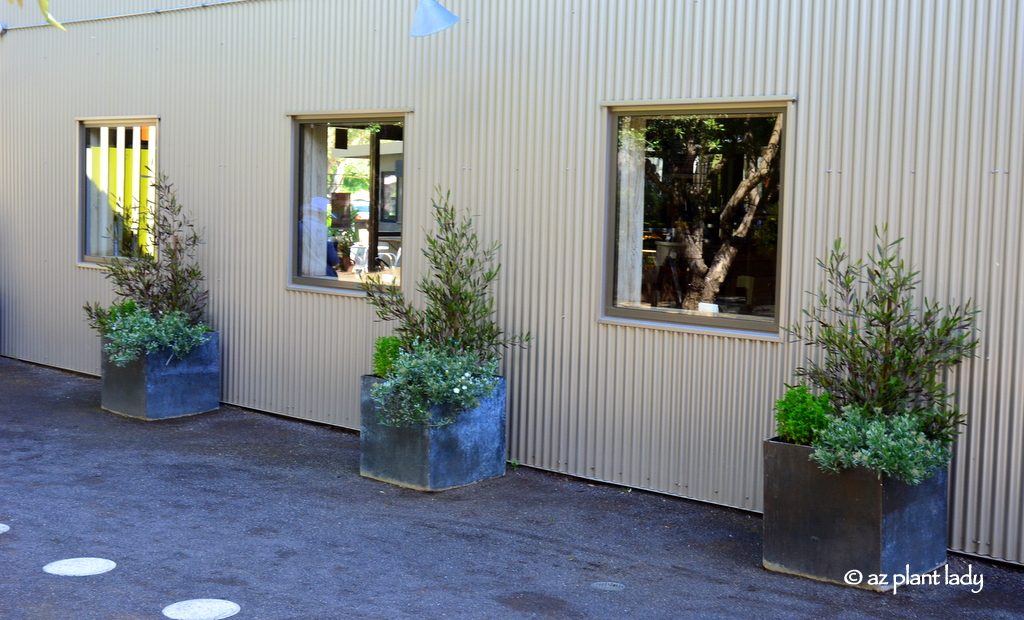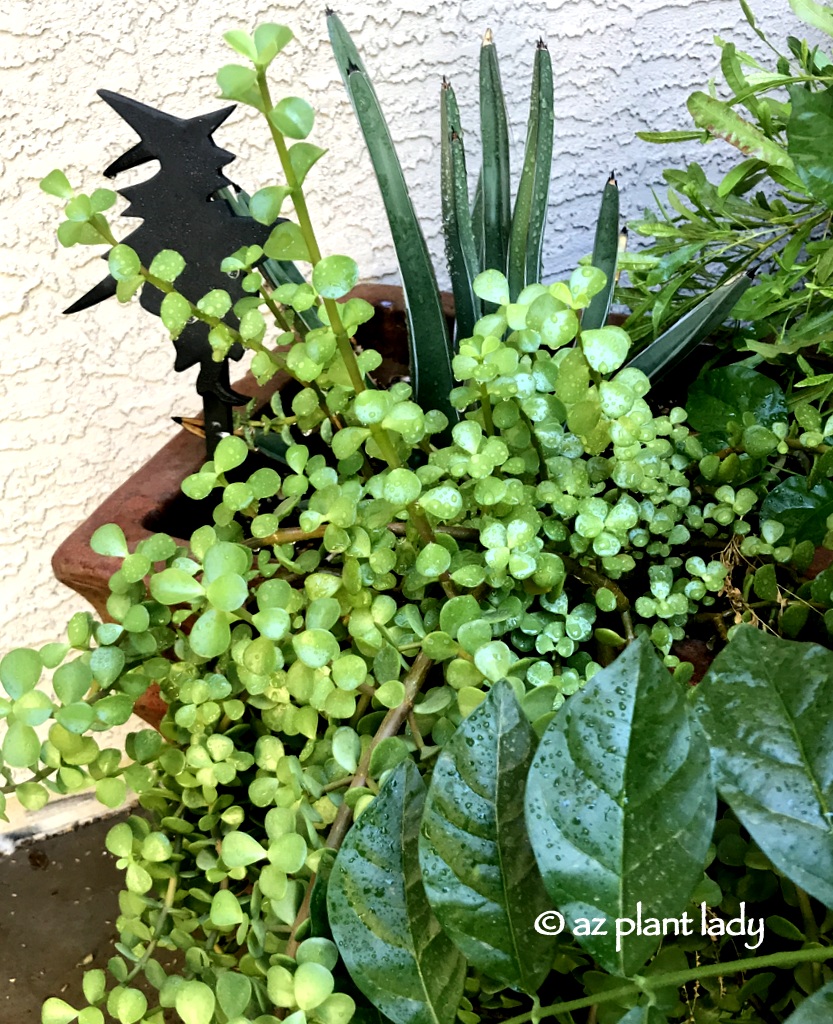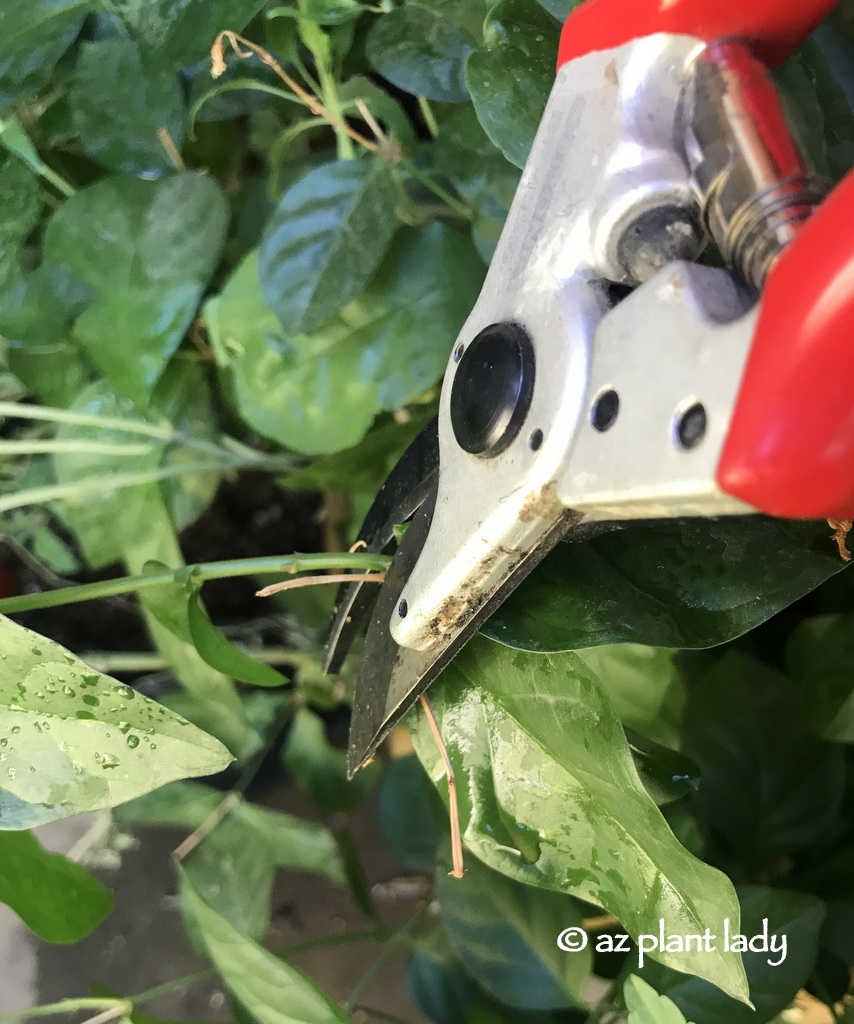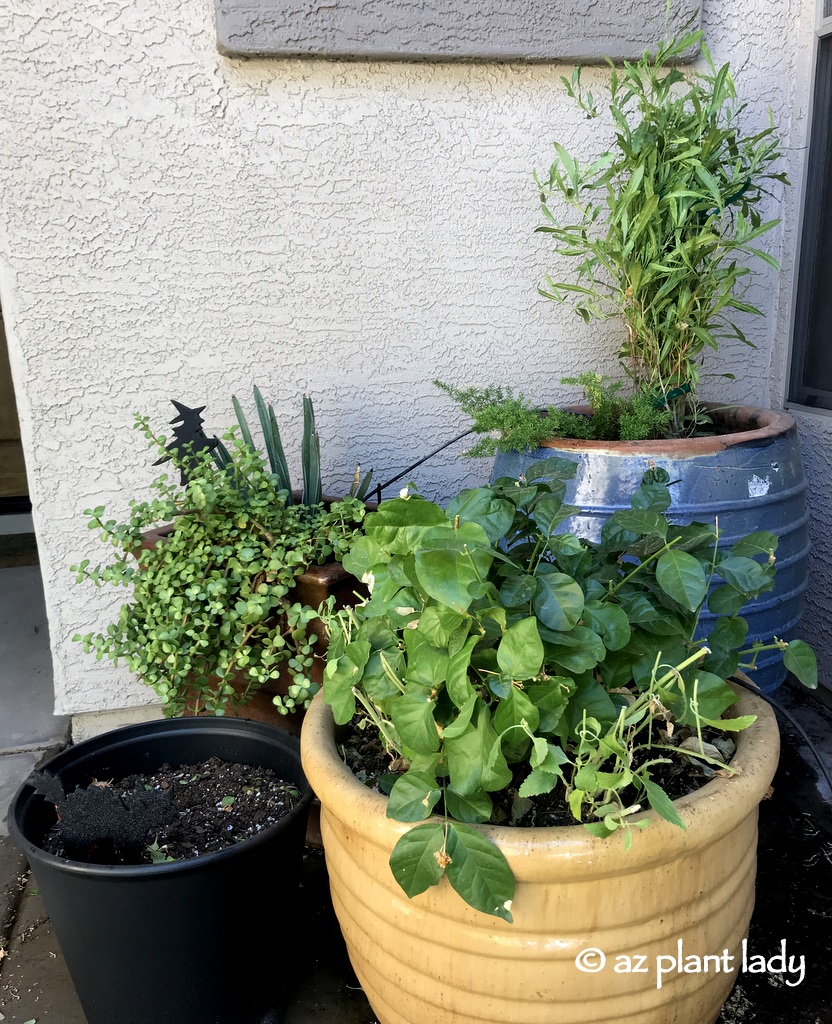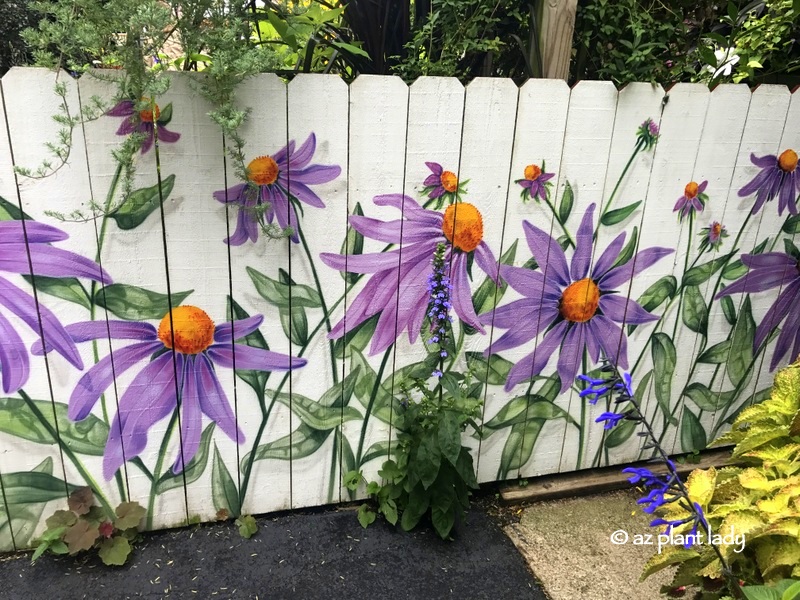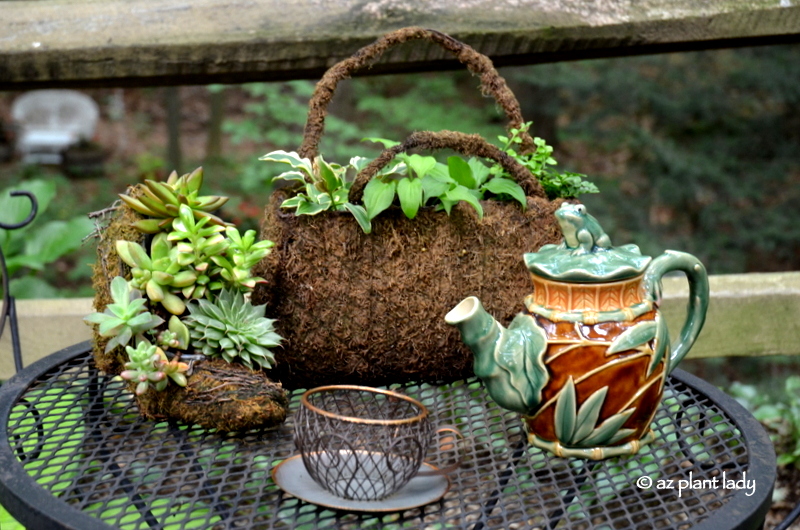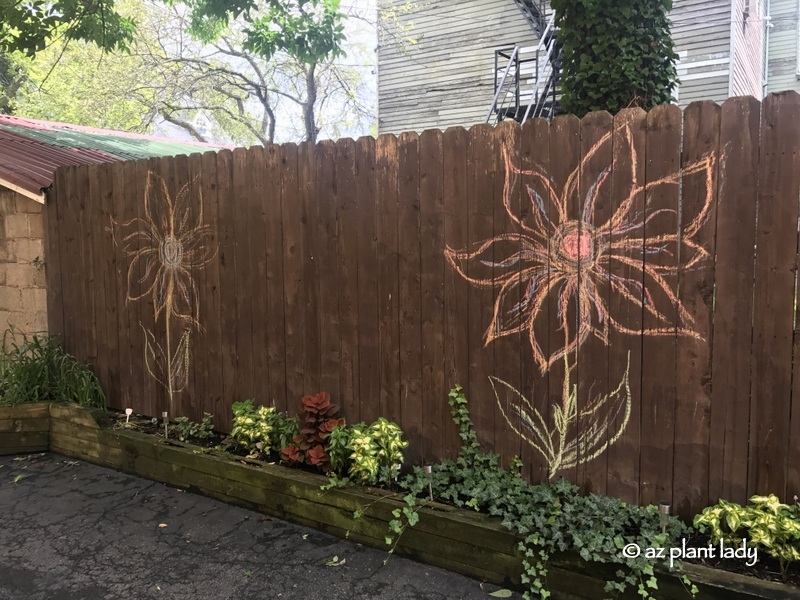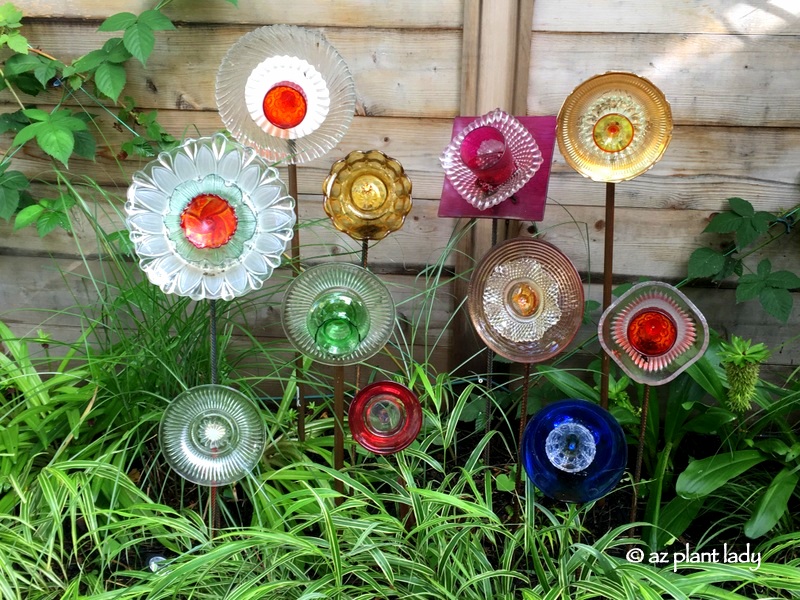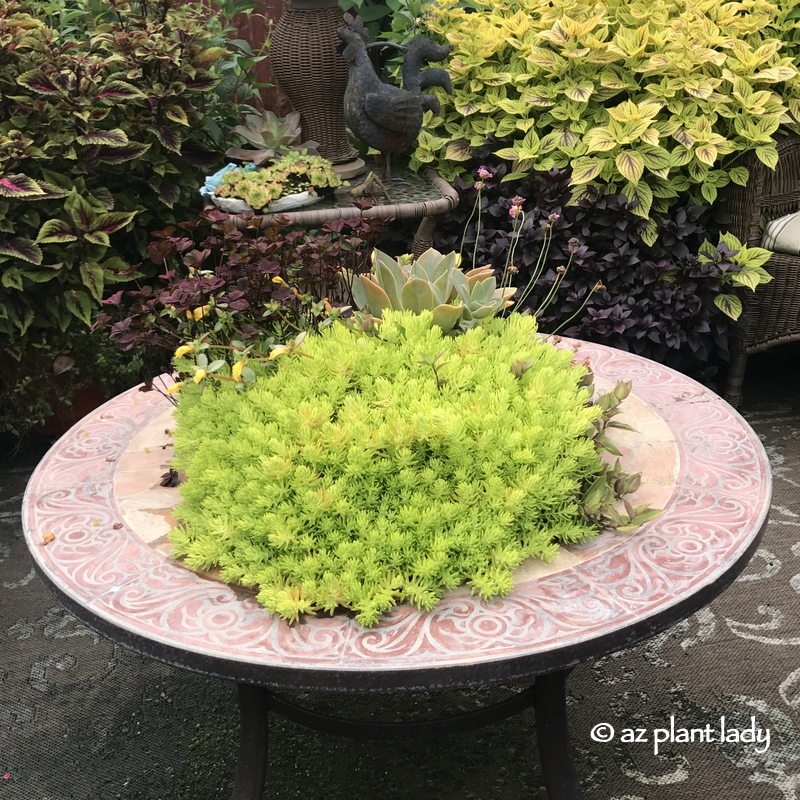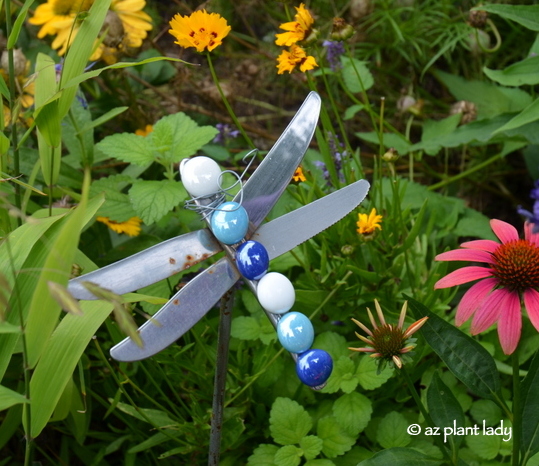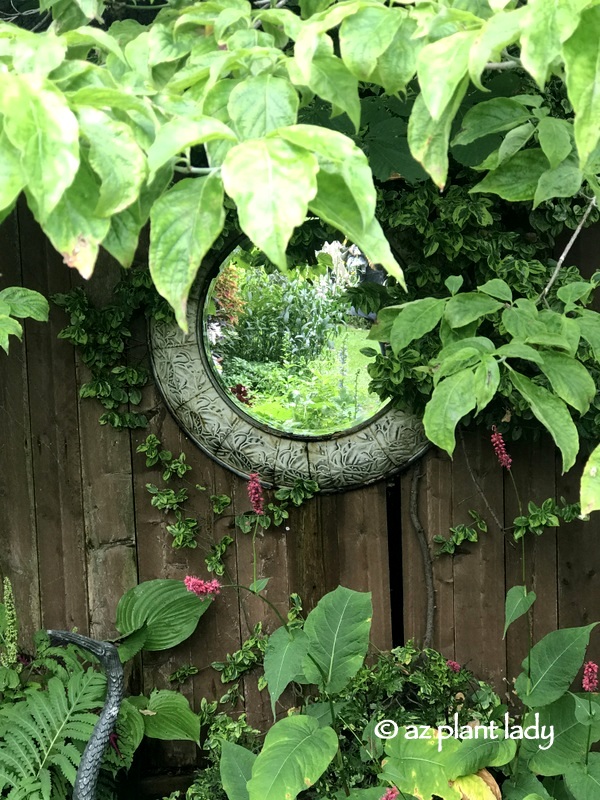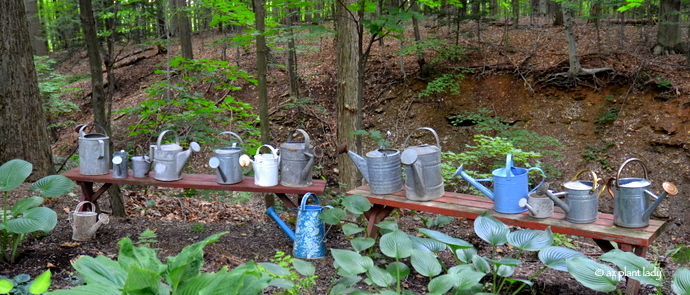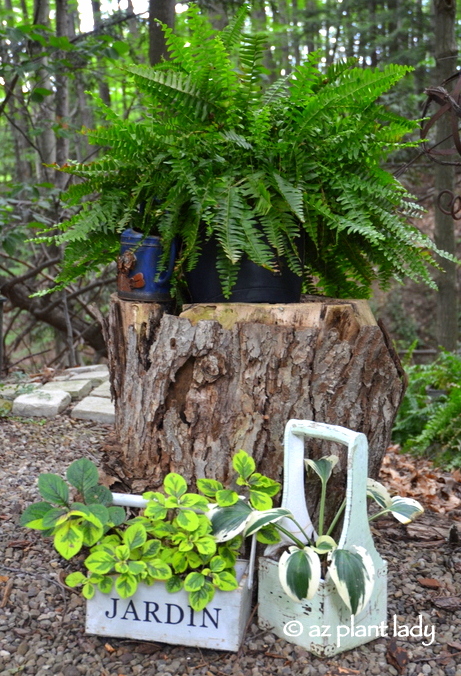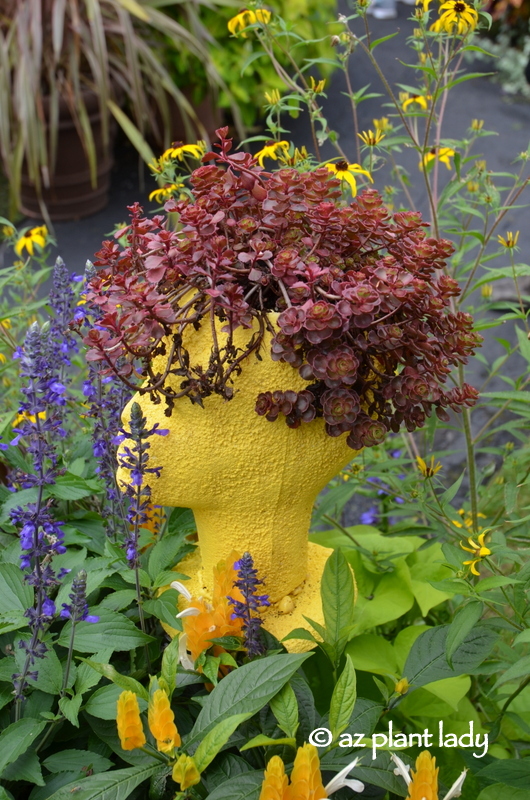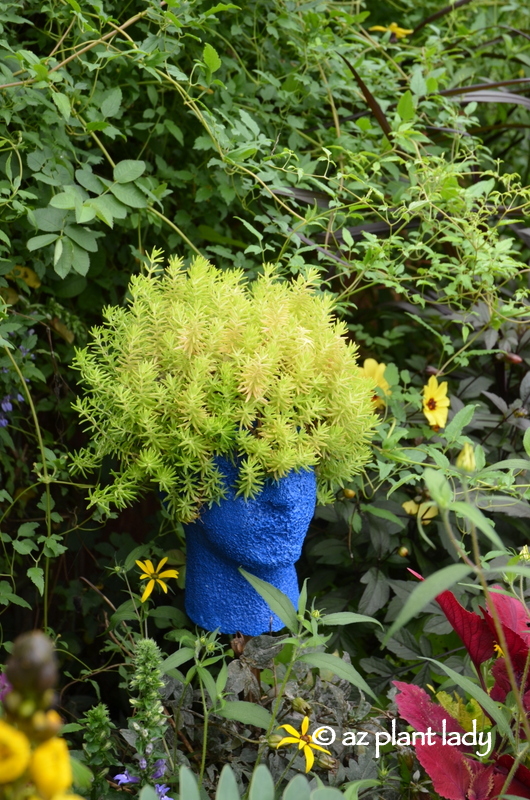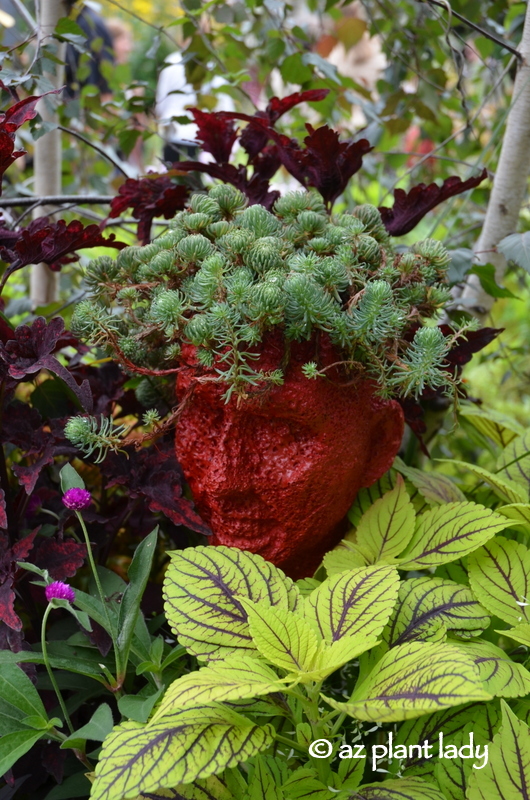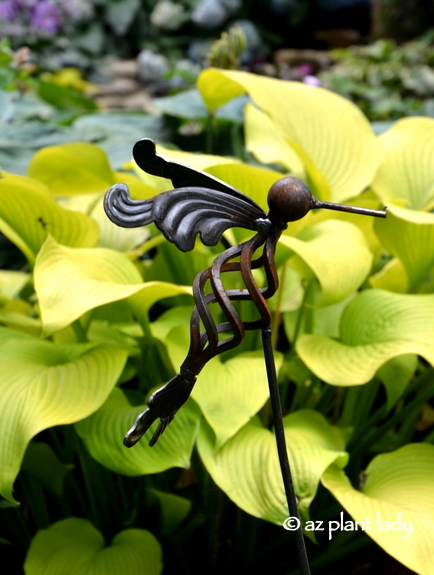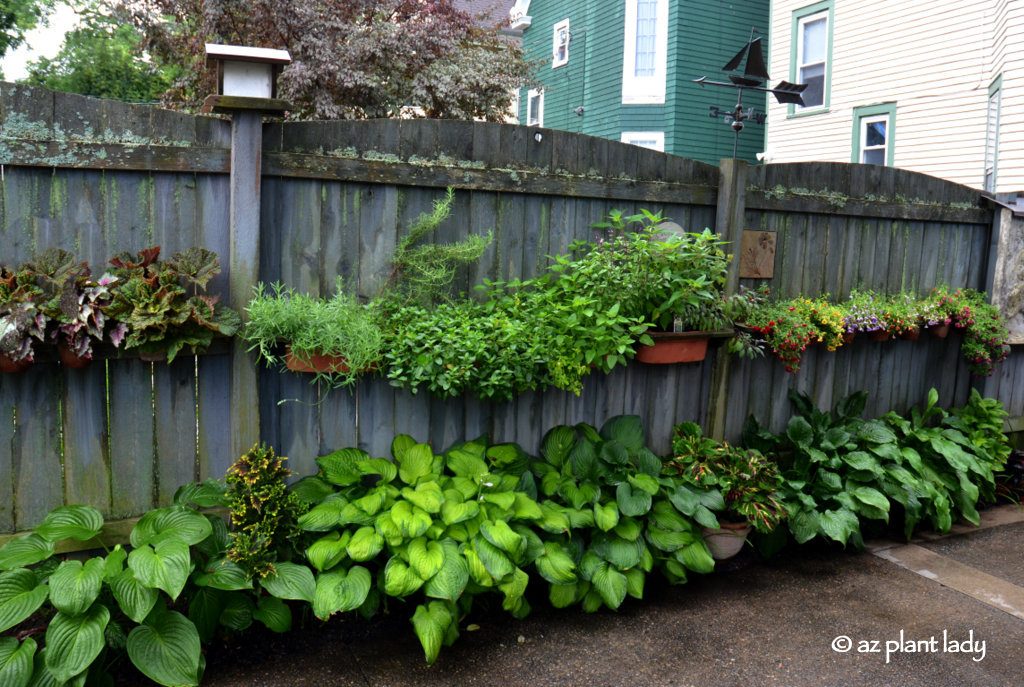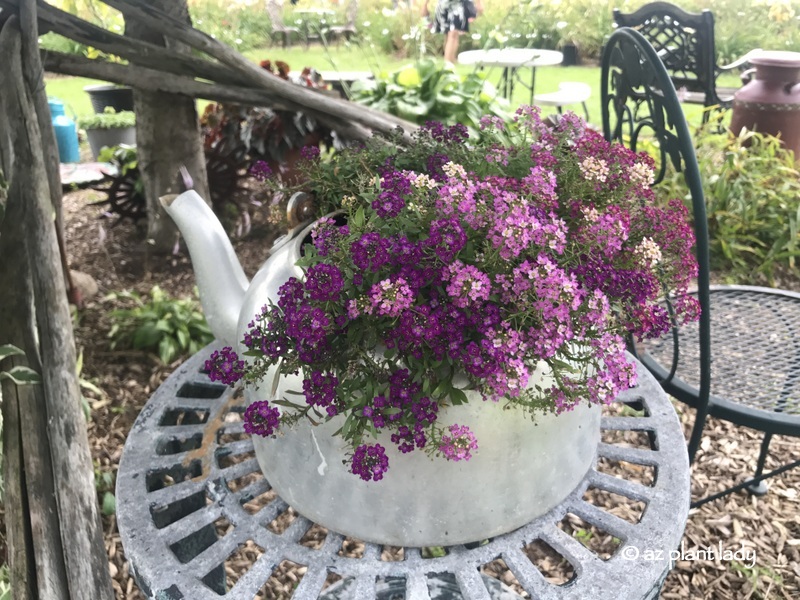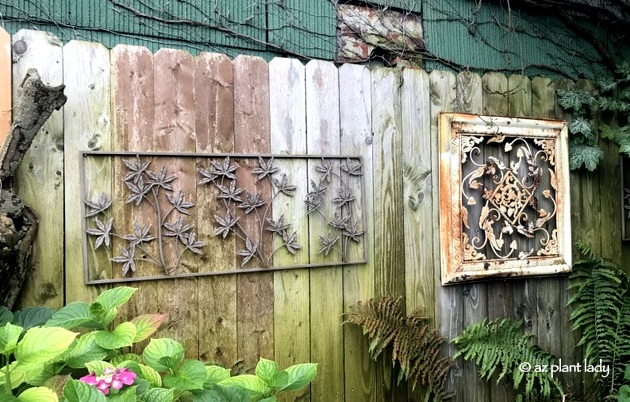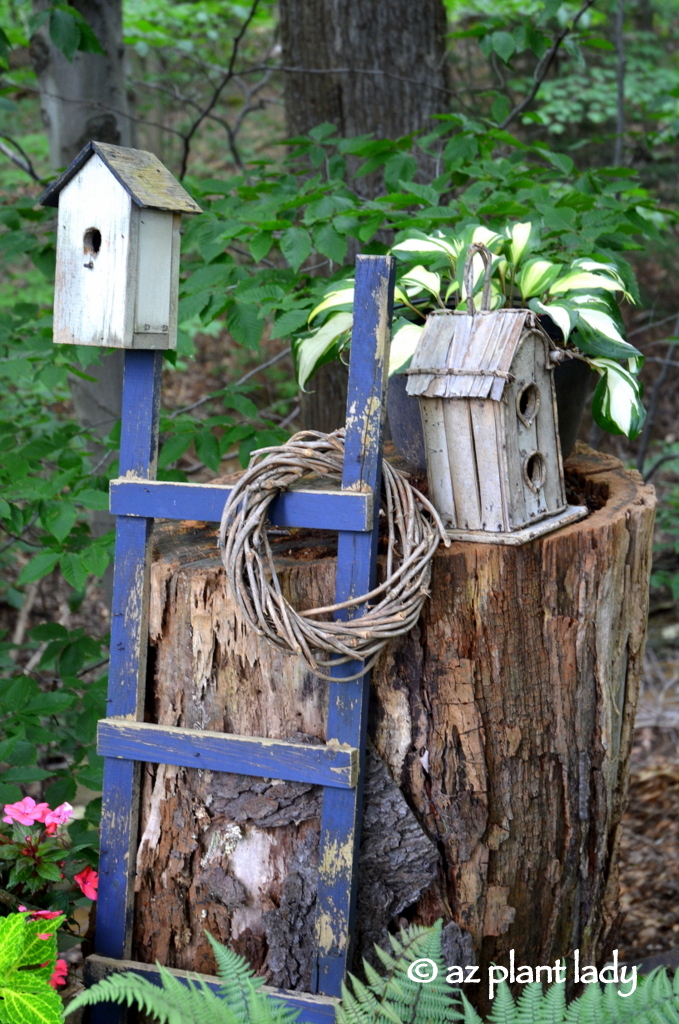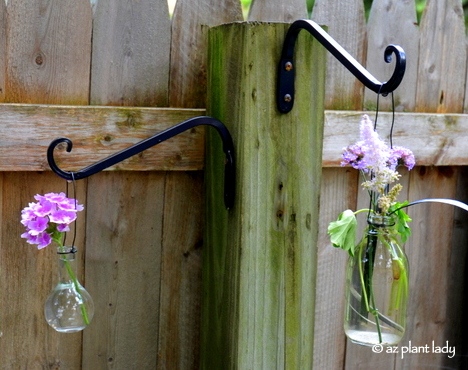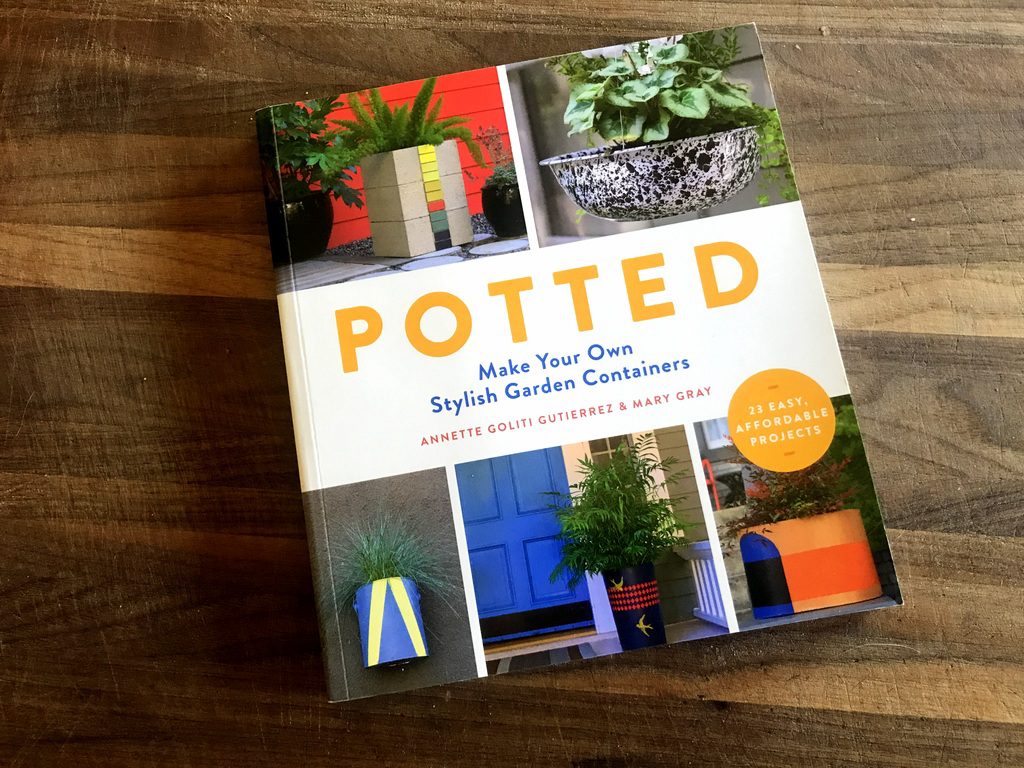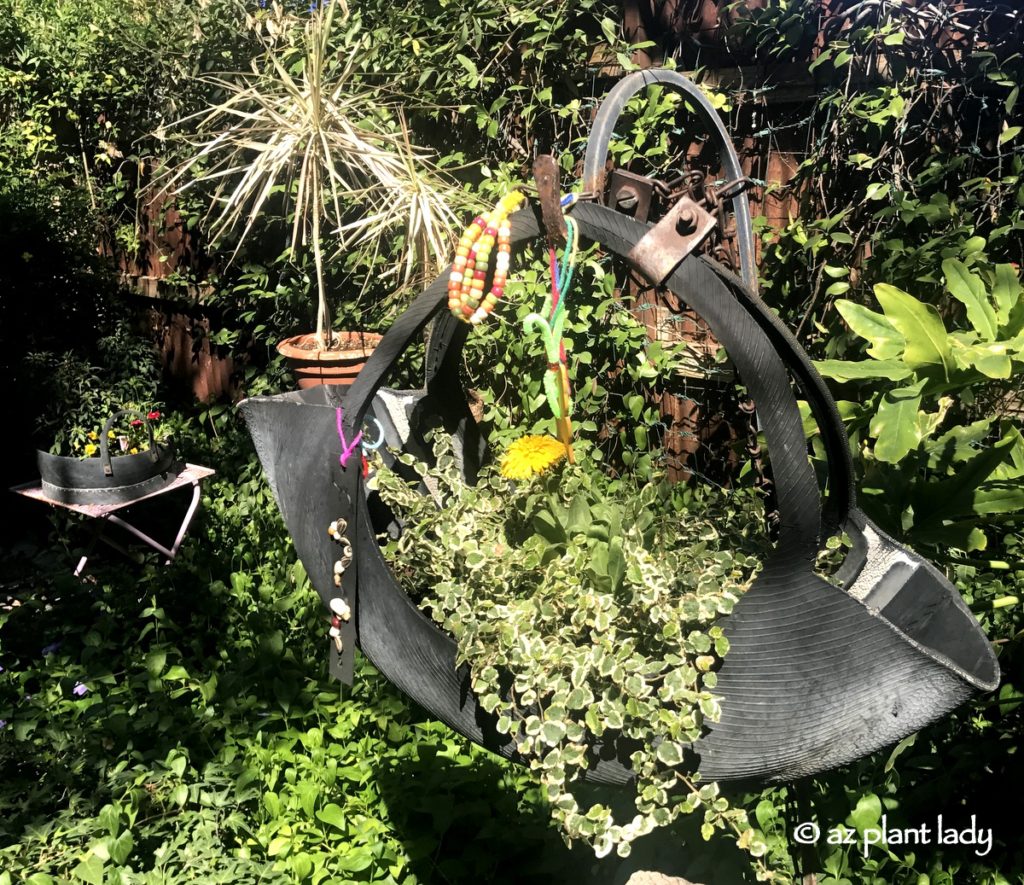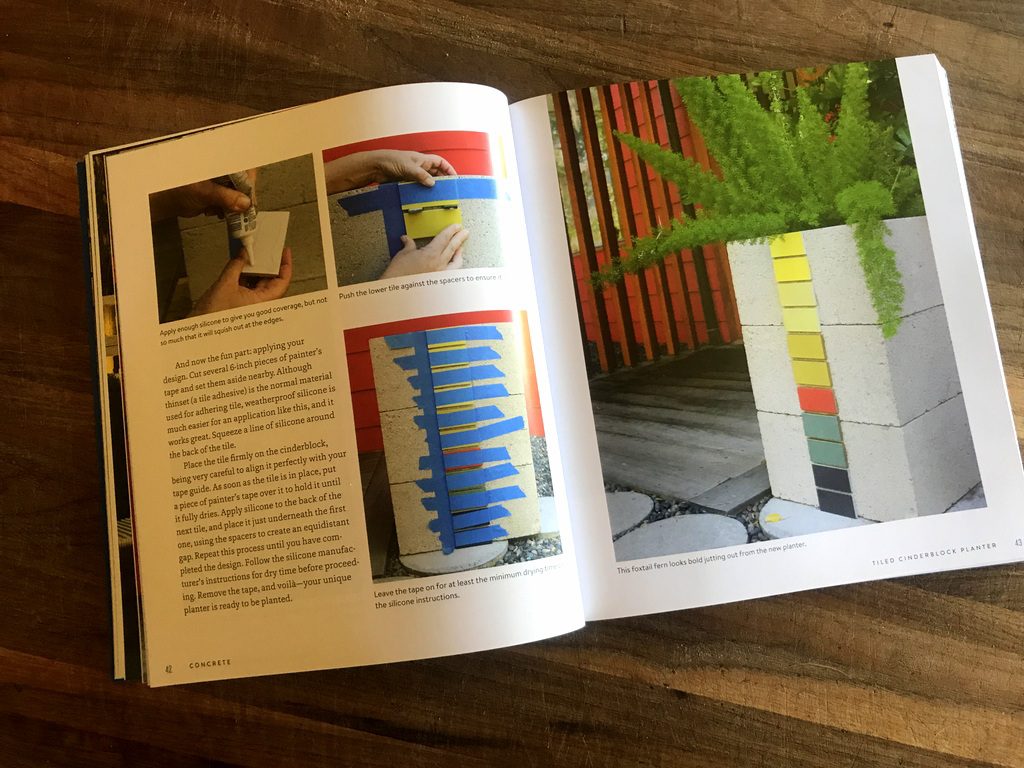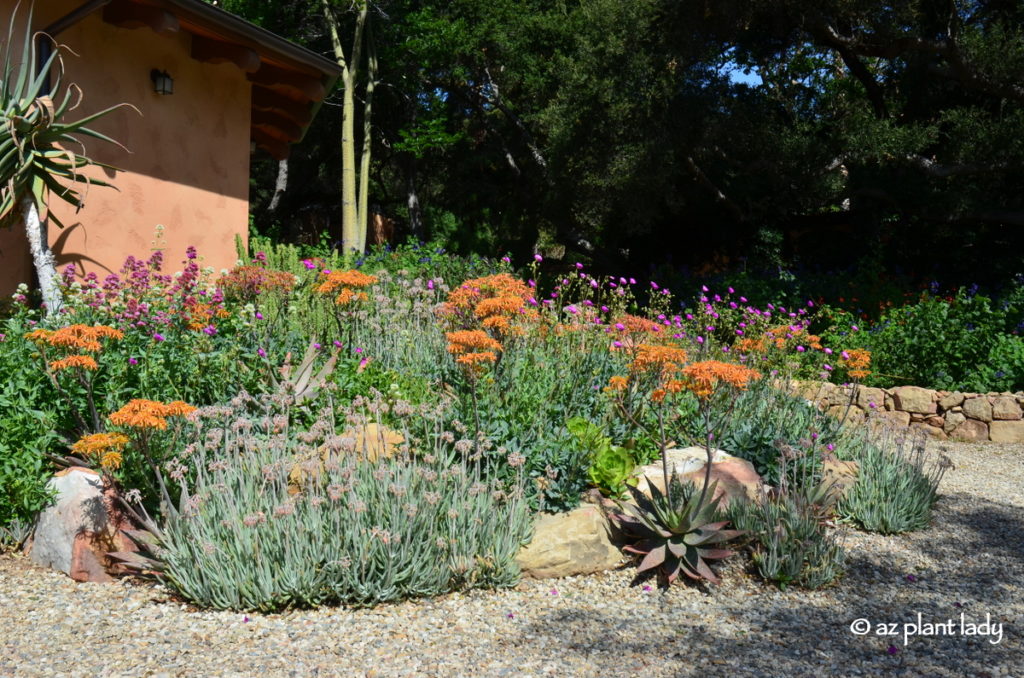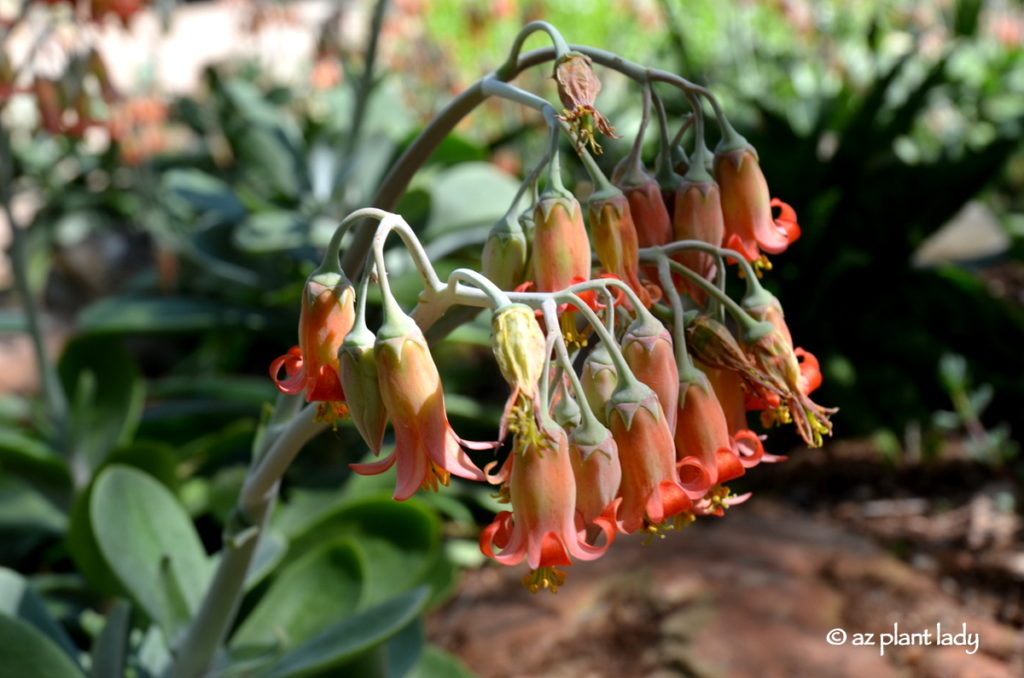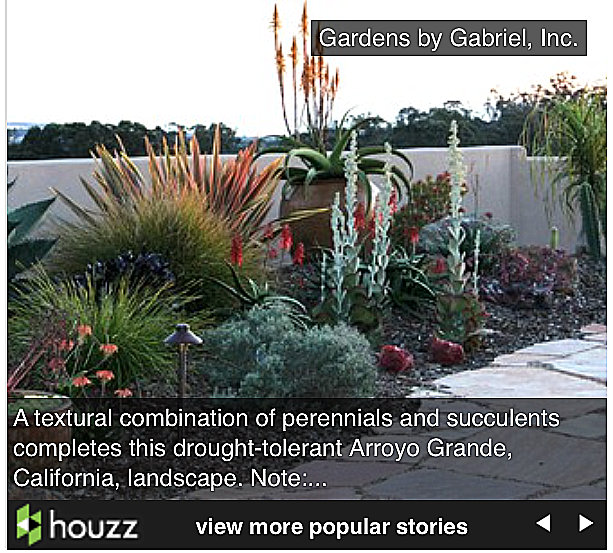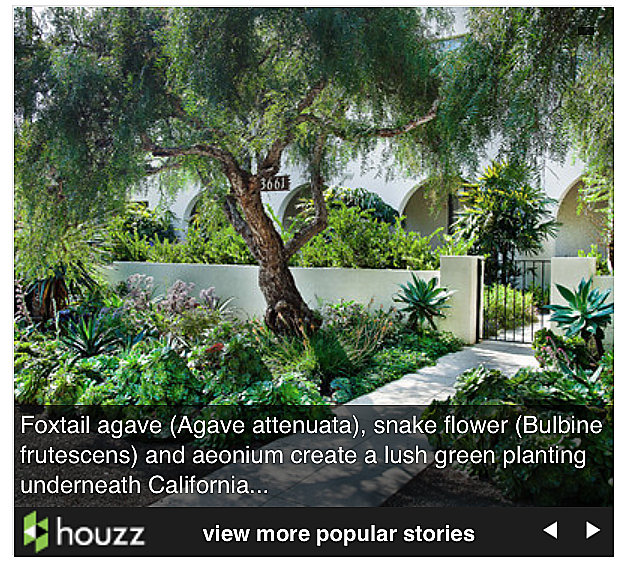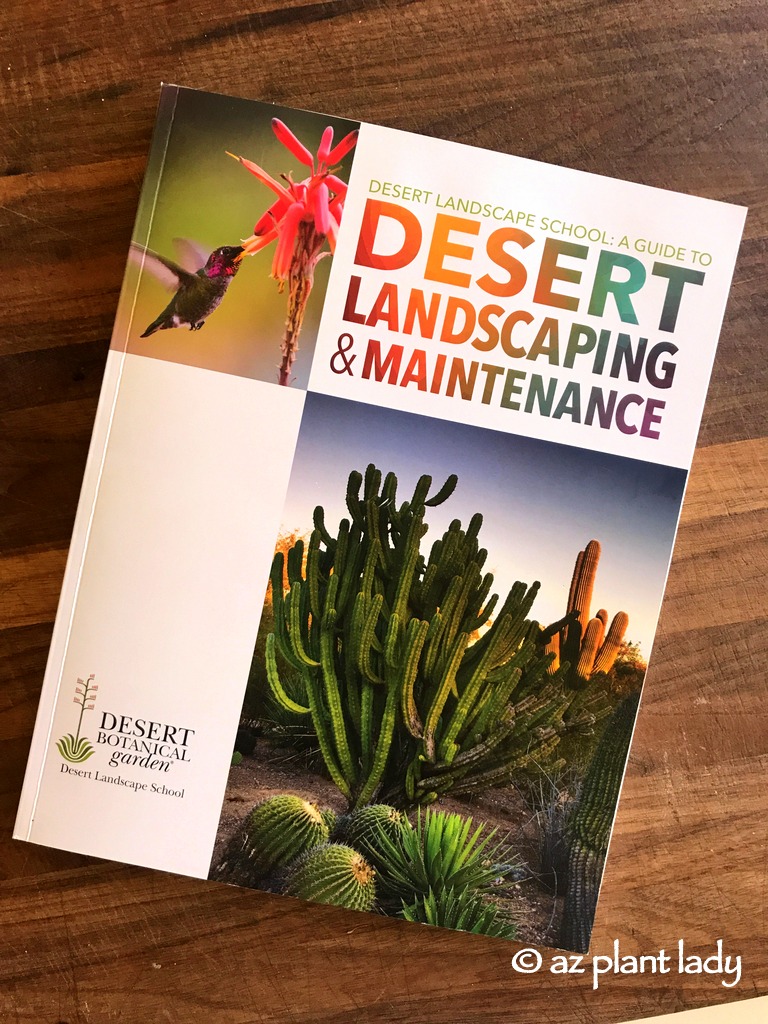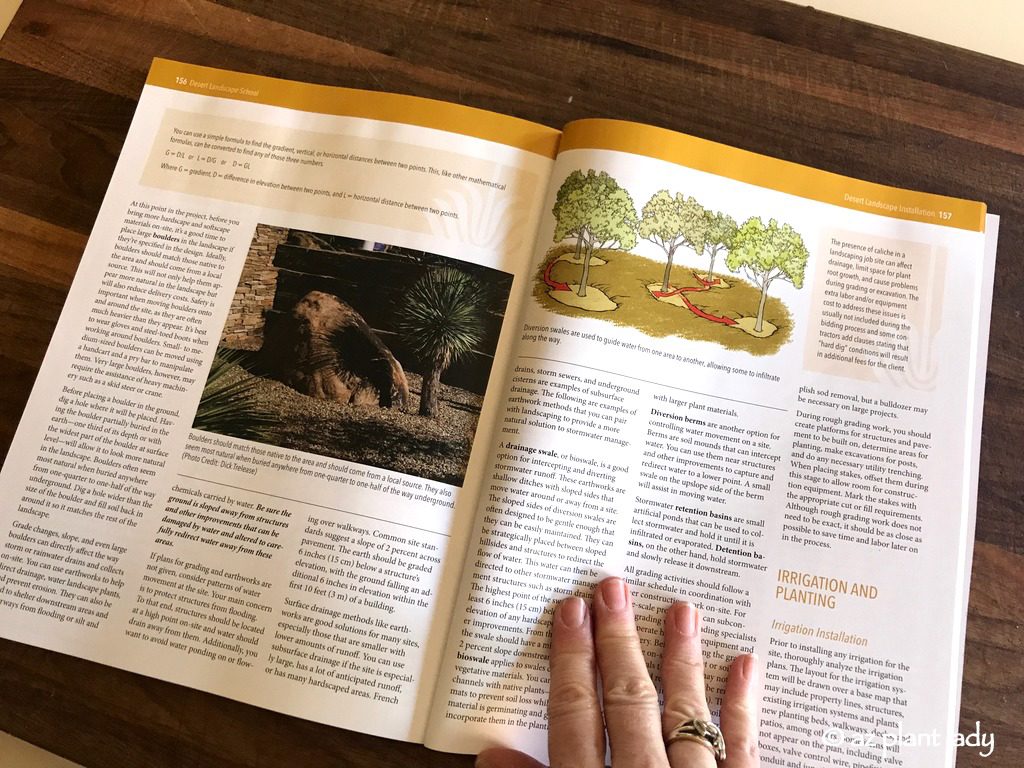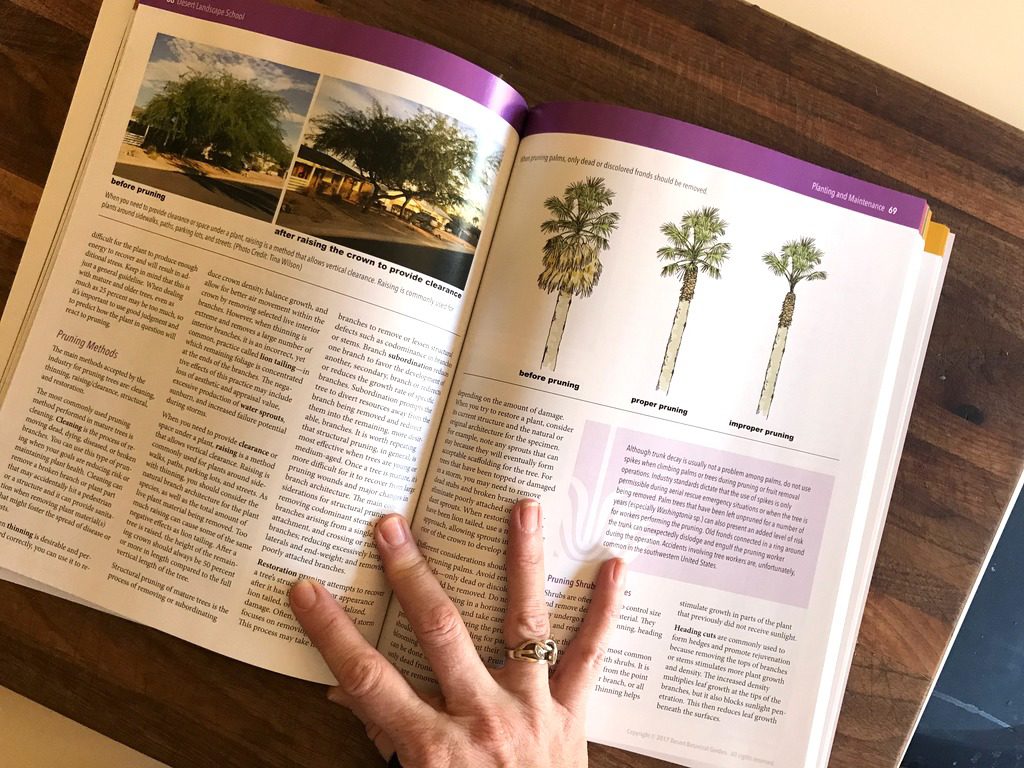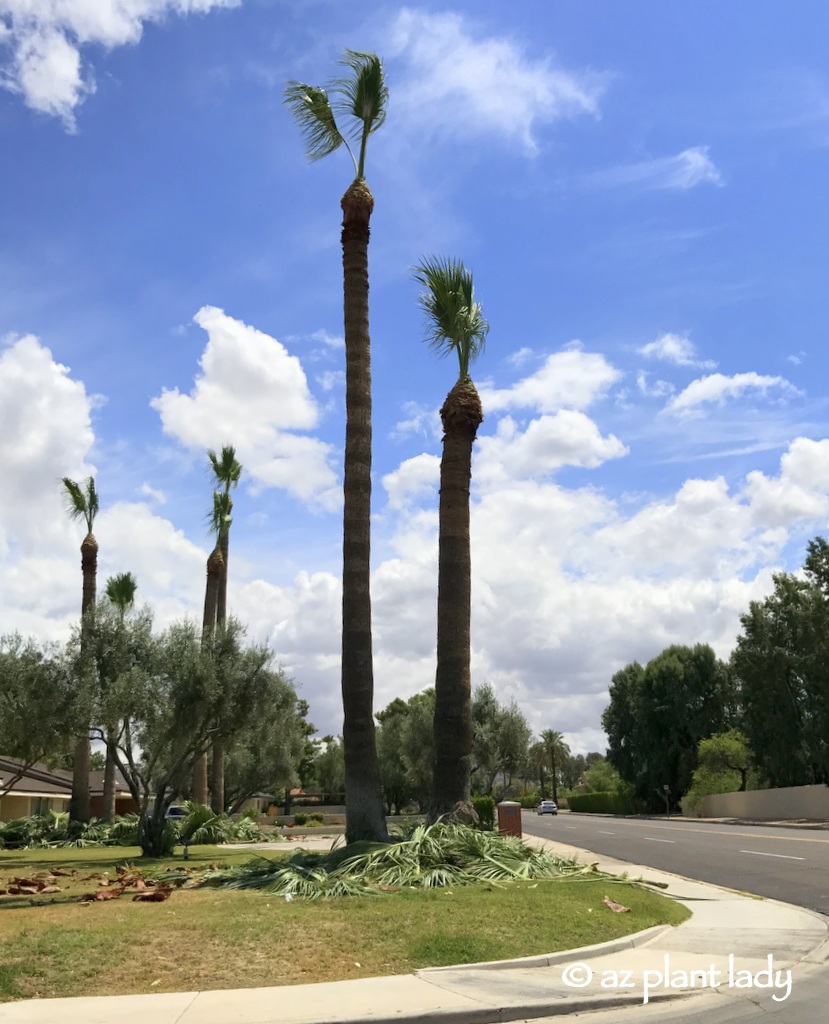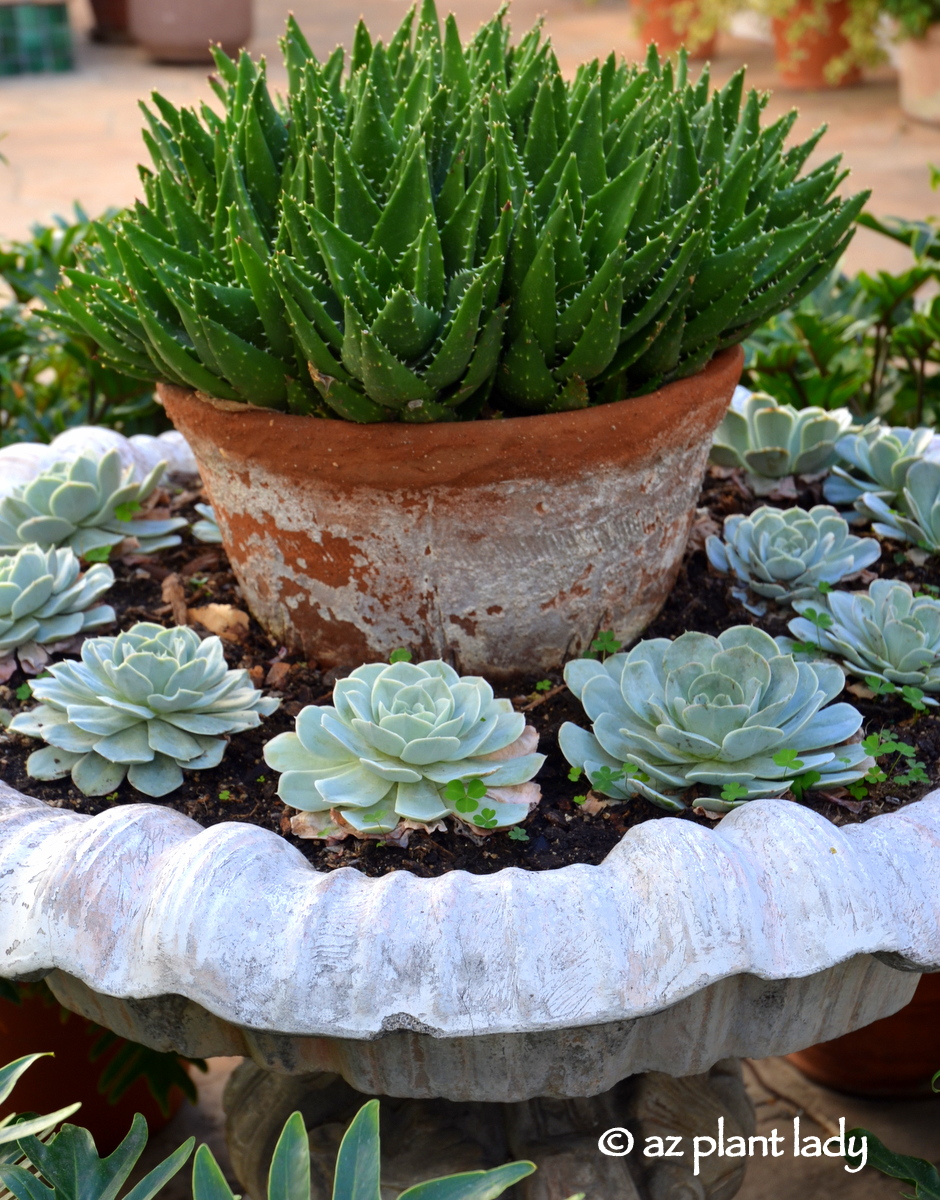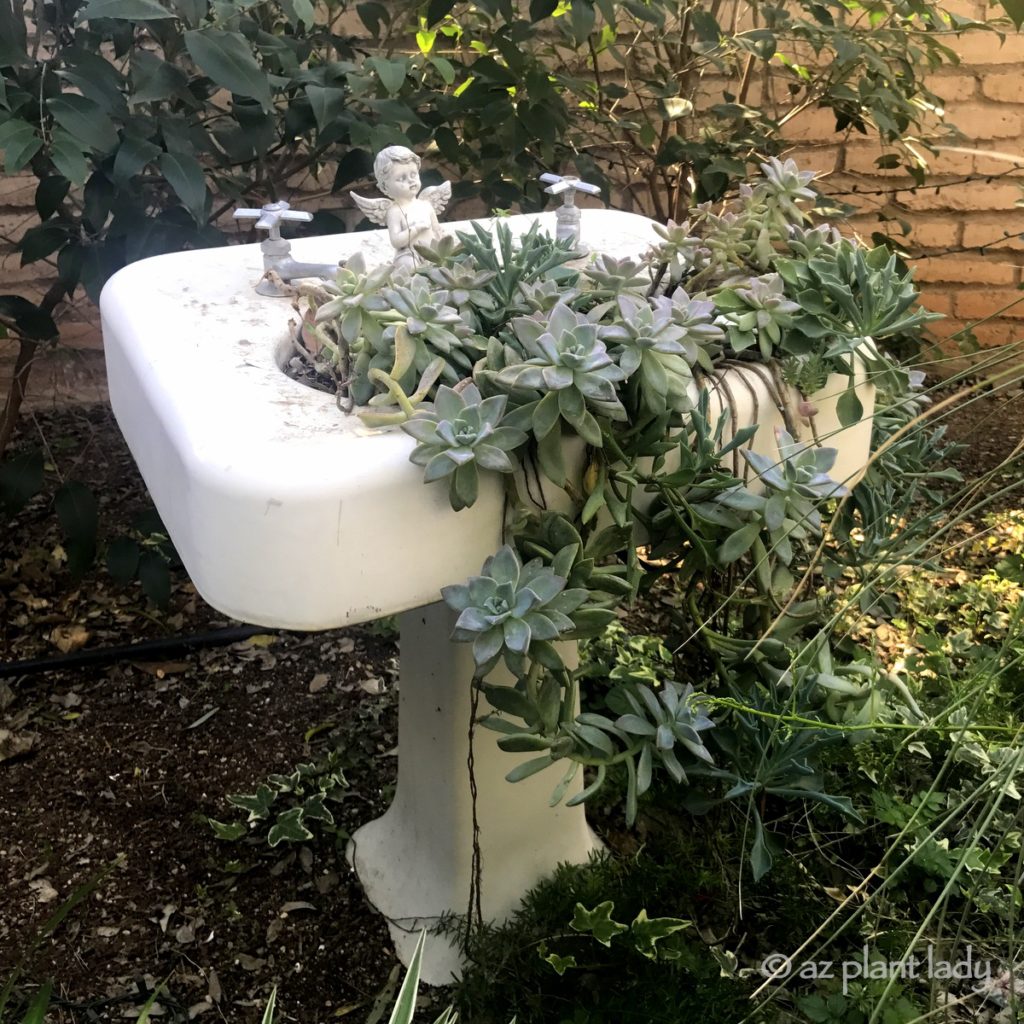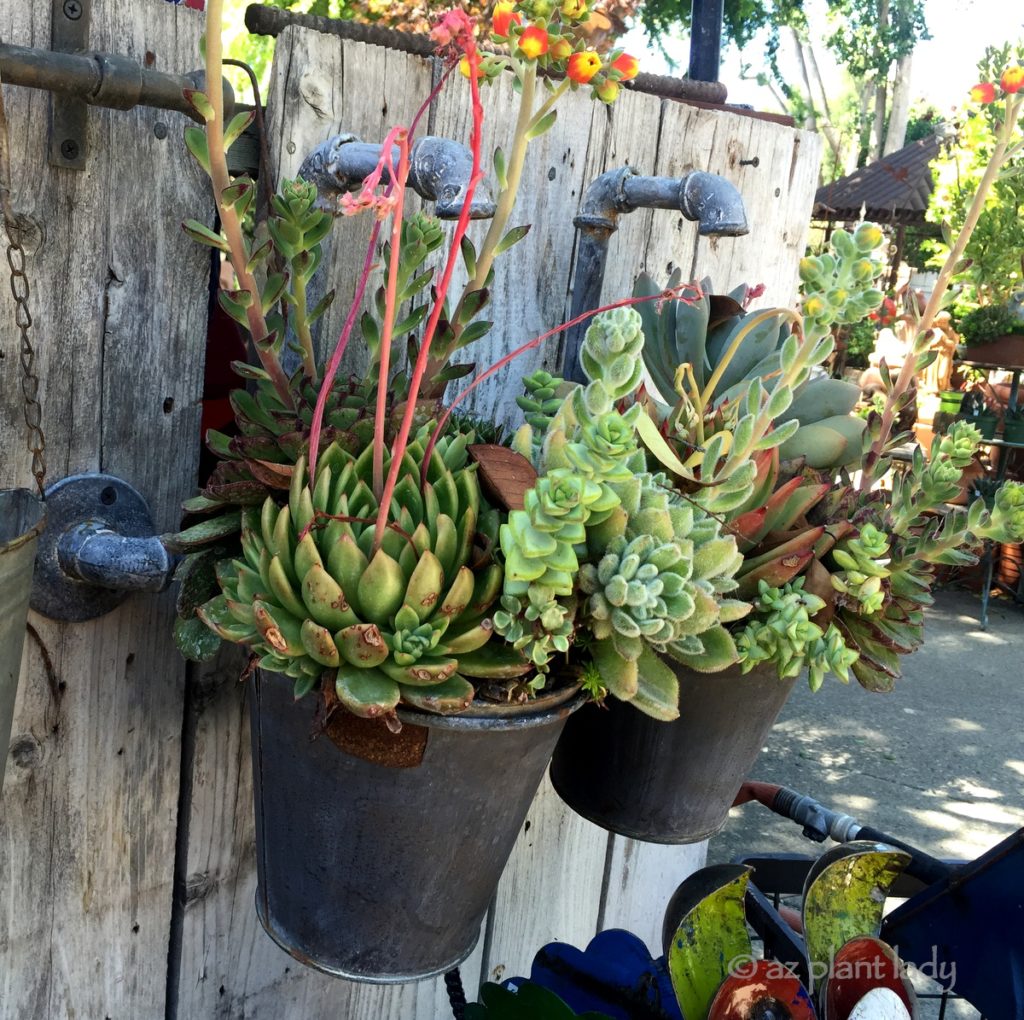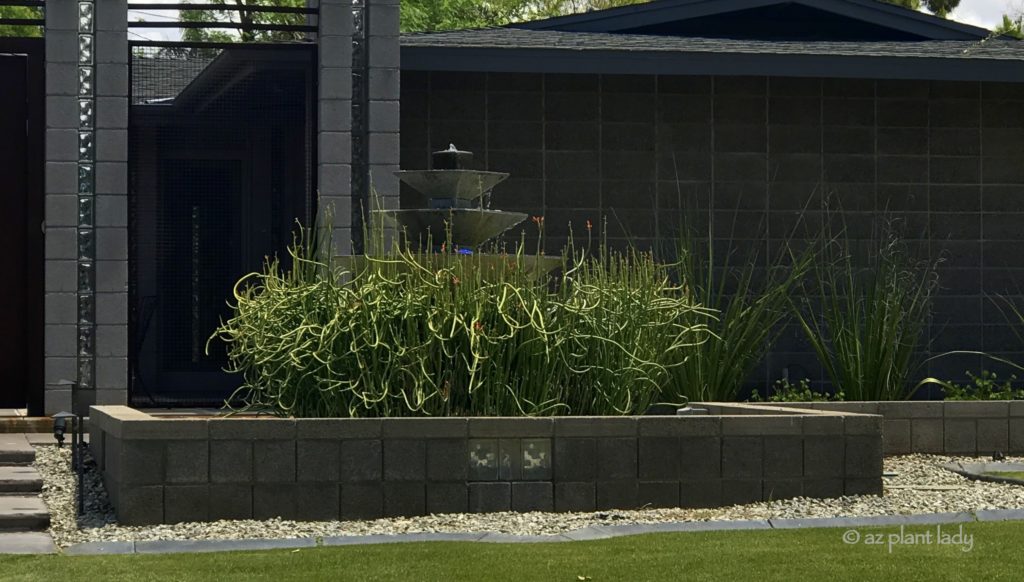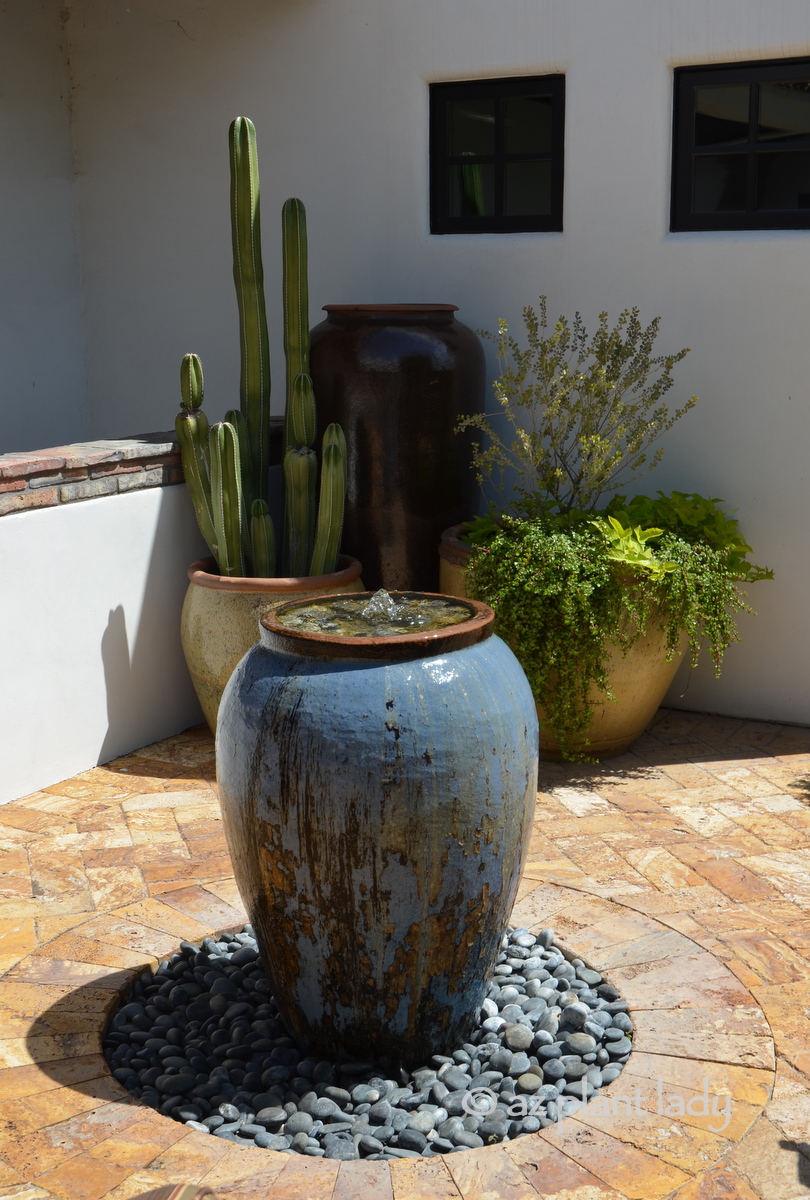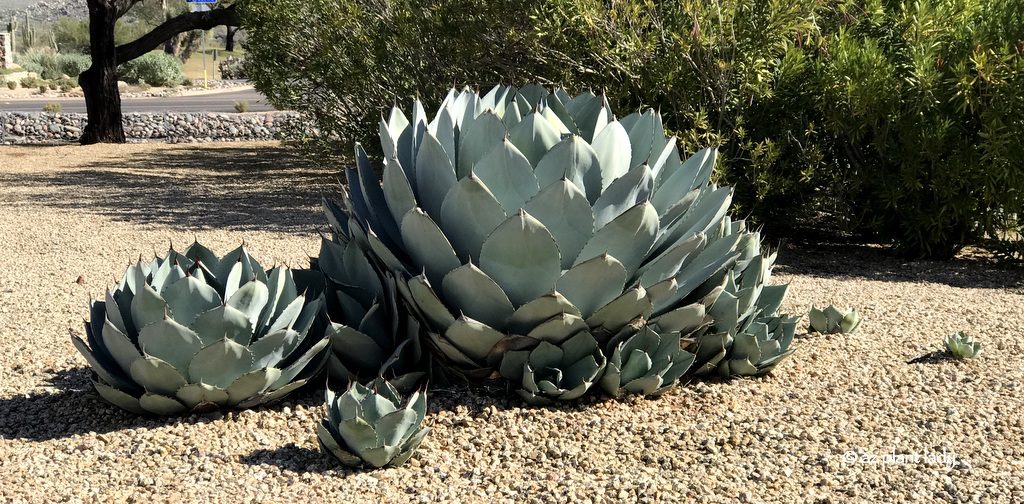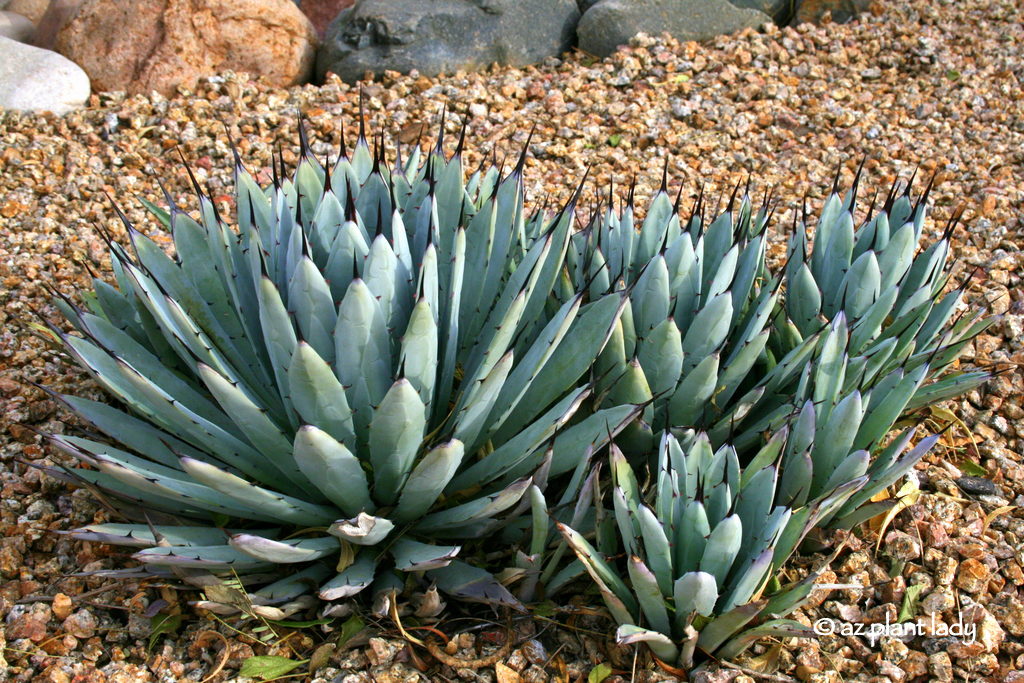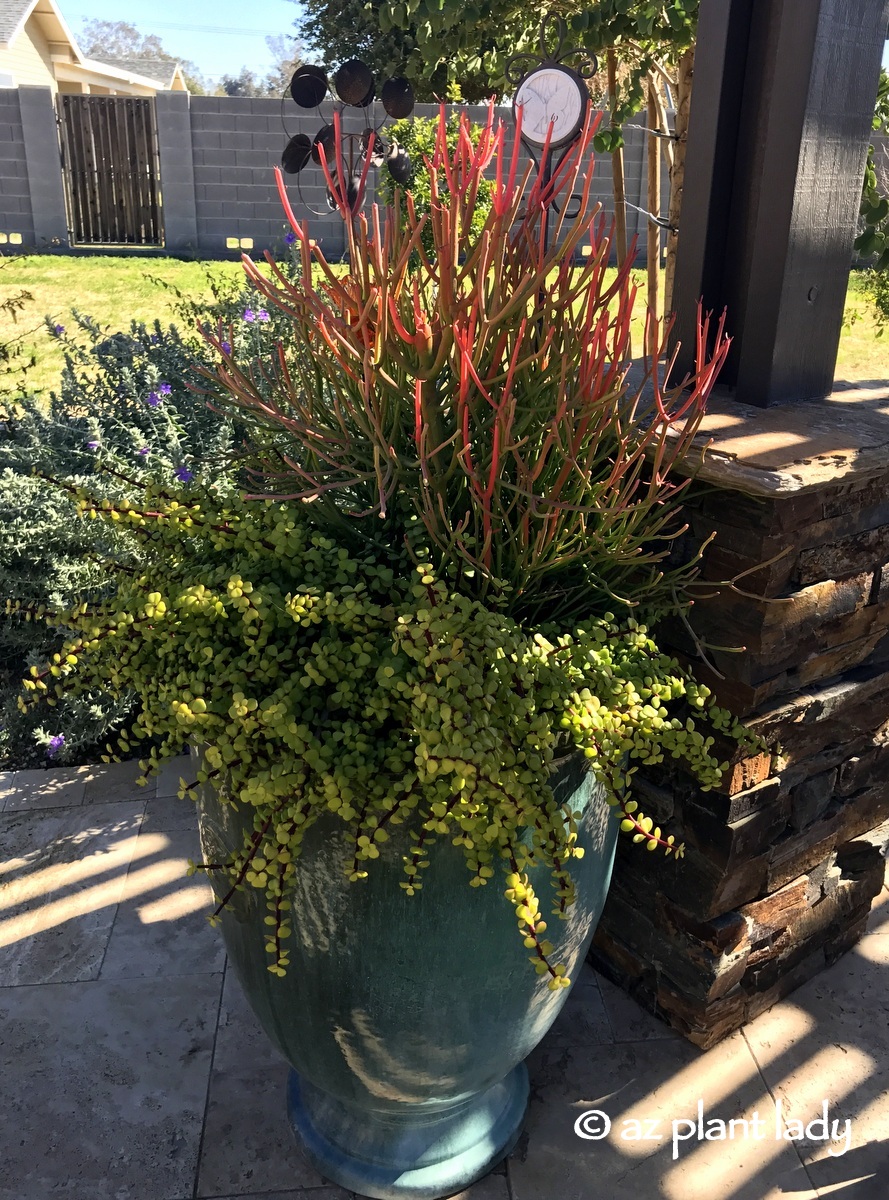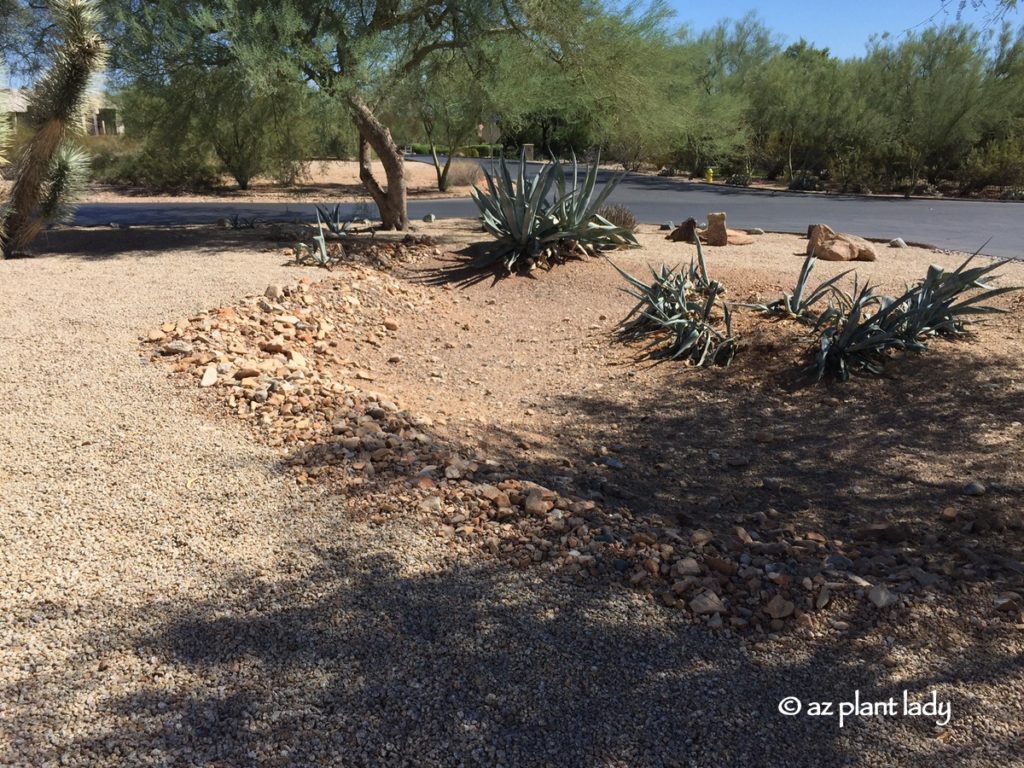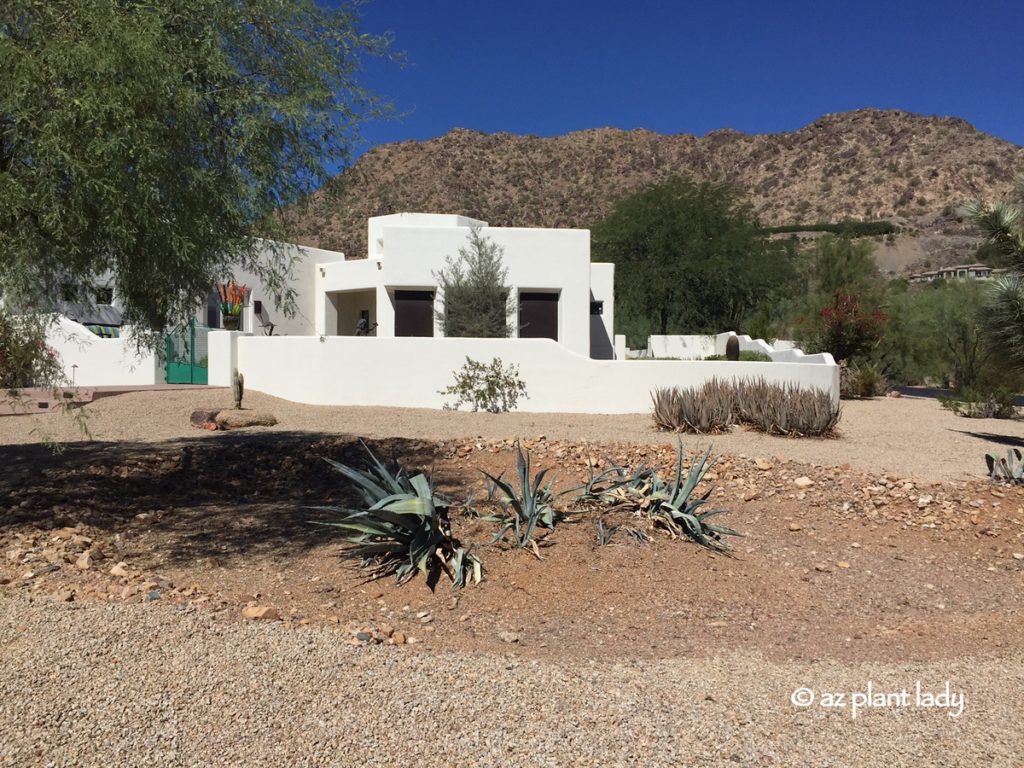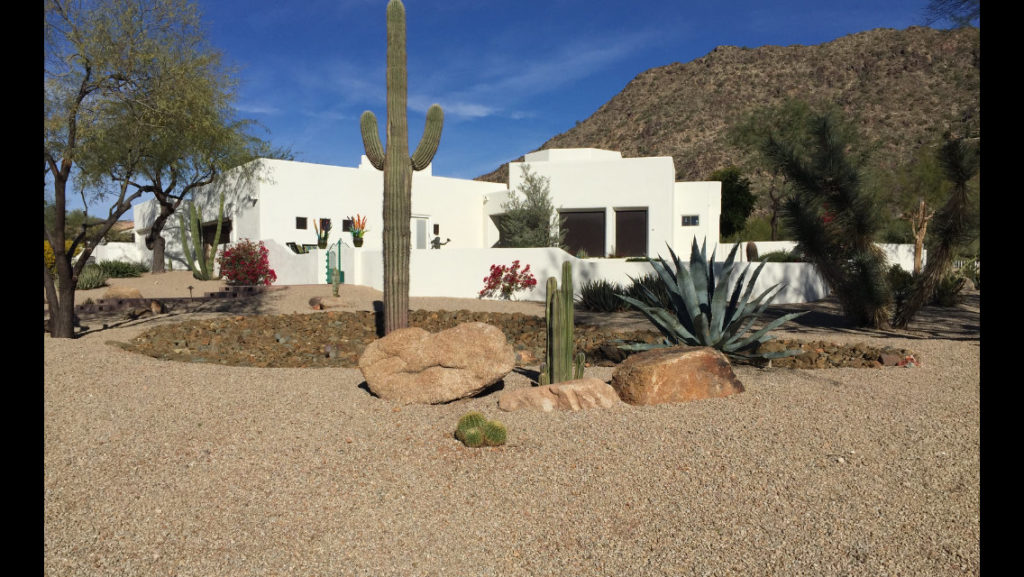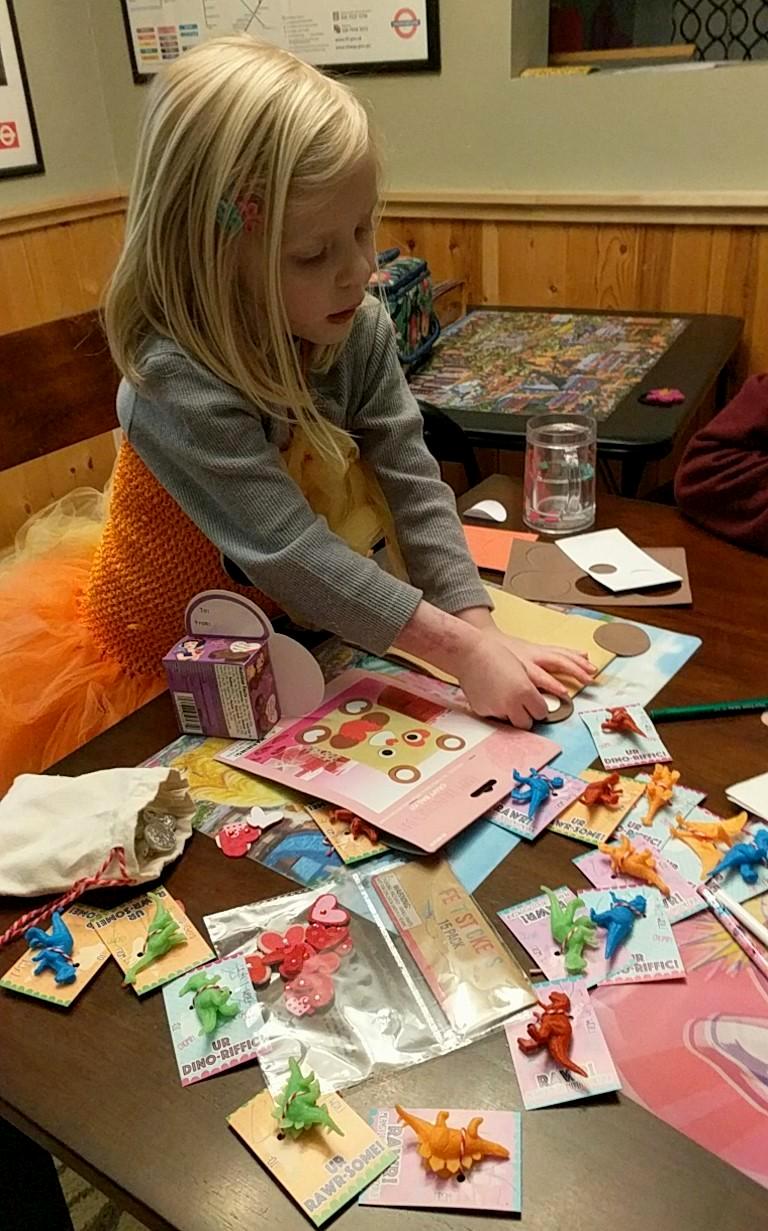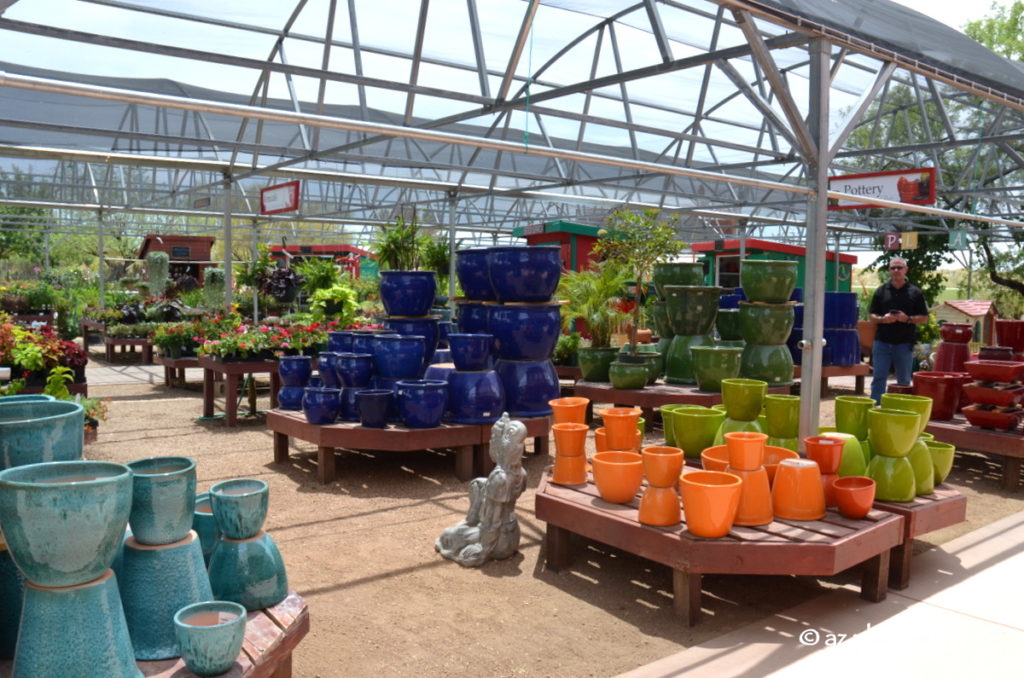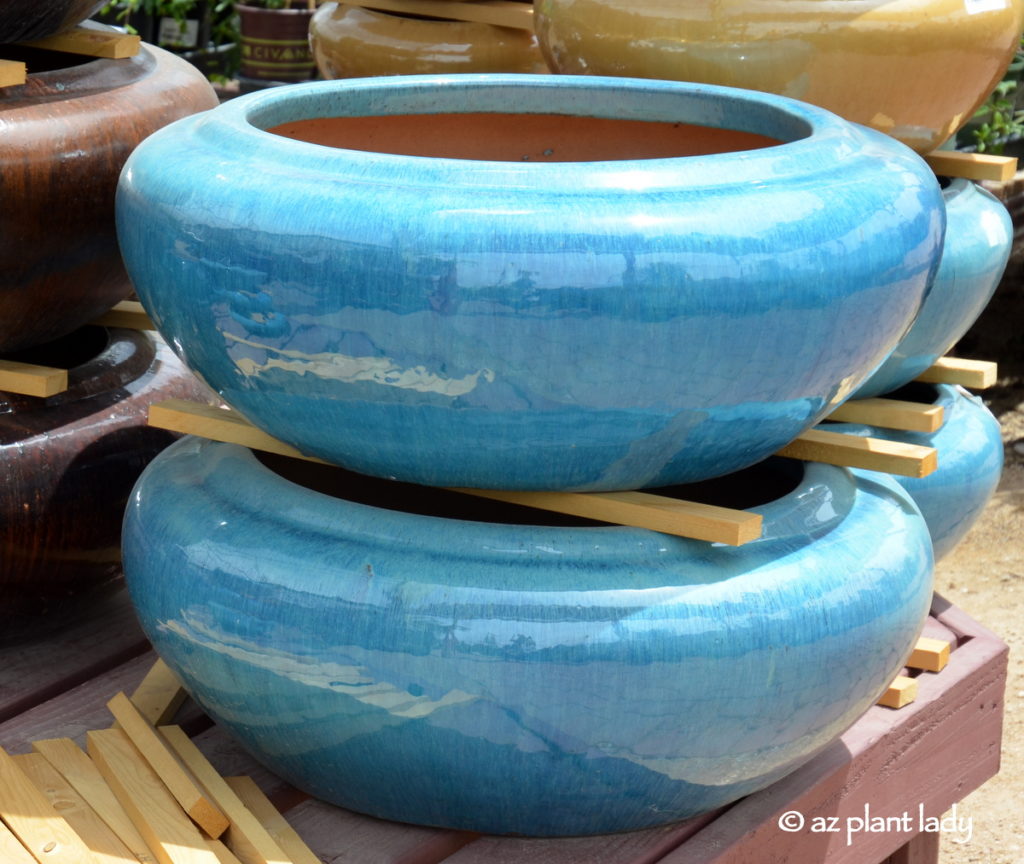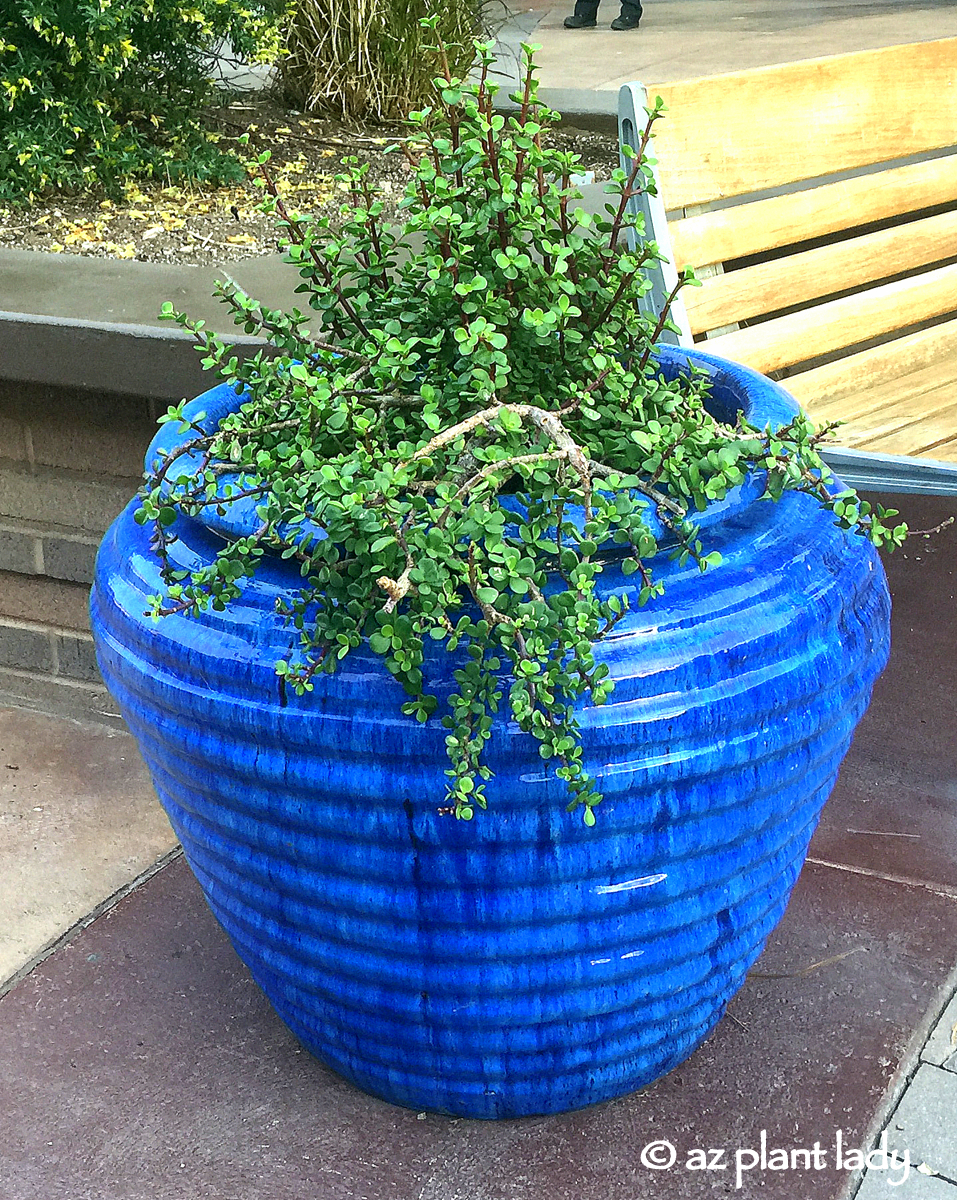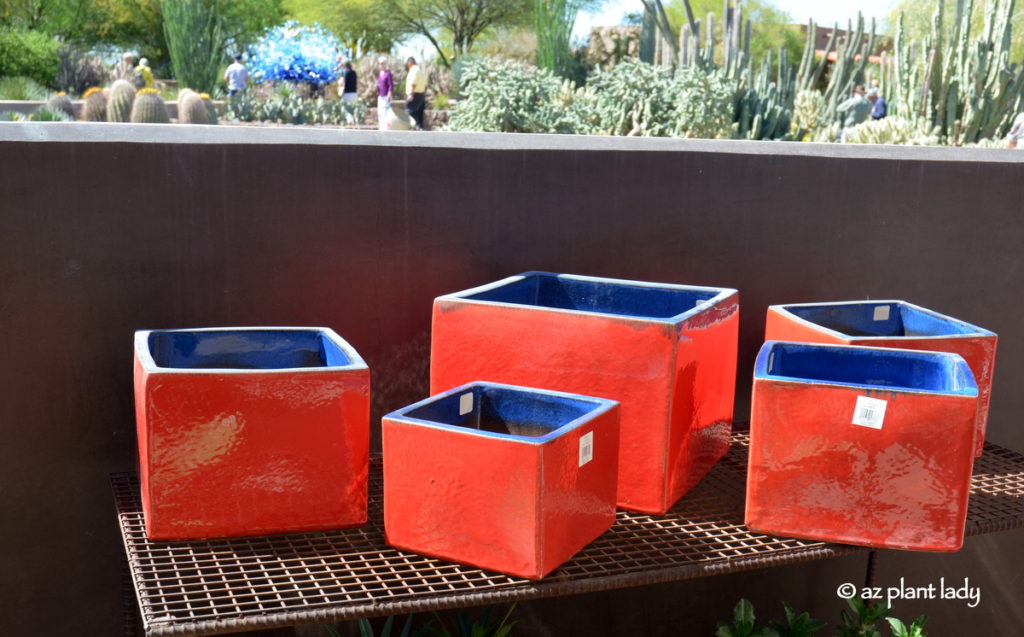Dealing with the Dilemma of an Overgrown Plant: To Prune or Replace?
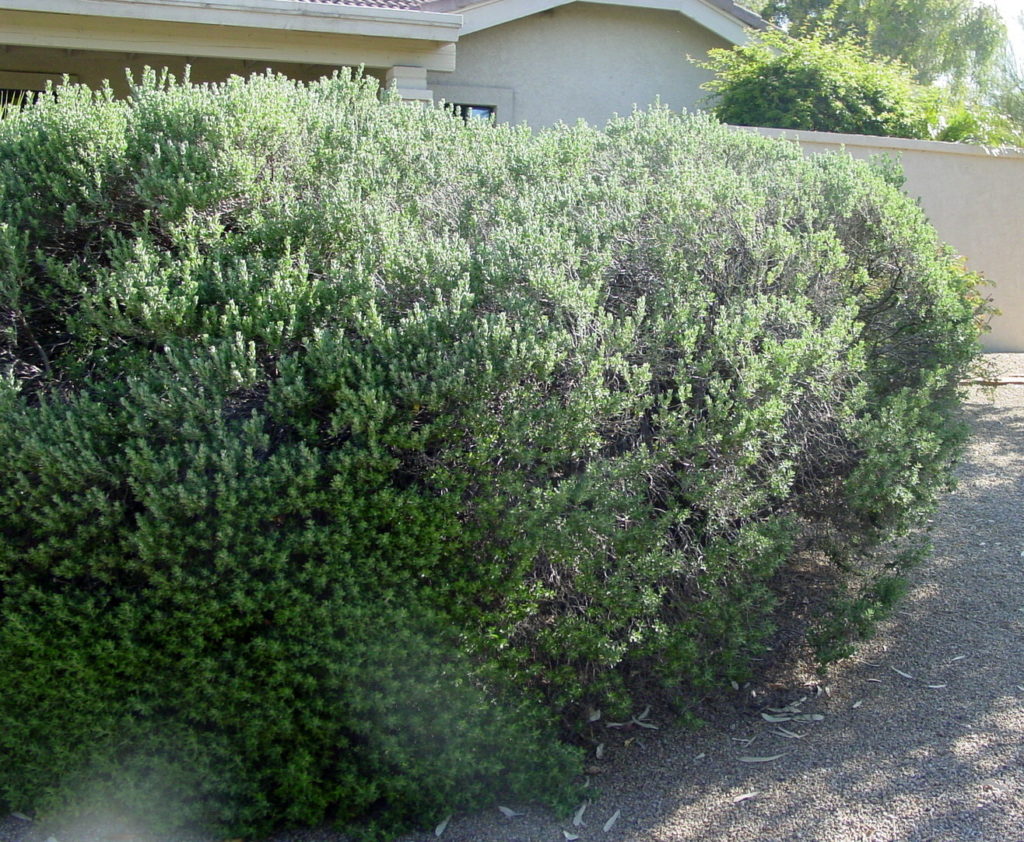
Overgrown plant, old Texas sage (Leucophyllum frutescens ‘Green Cloud’)
The Challenge of Aging Plants in the Landscape
You have undoubtedly seen old, overgrown plants filled with mostly leafless branches that rarely flower anymore. Or, perhaps it is an aged succulent that has brown patches. The patches can slowly encroach onto the upper parts of the plant from the base. So, what is the solution for plants that no longer add decorative value to our landscape?
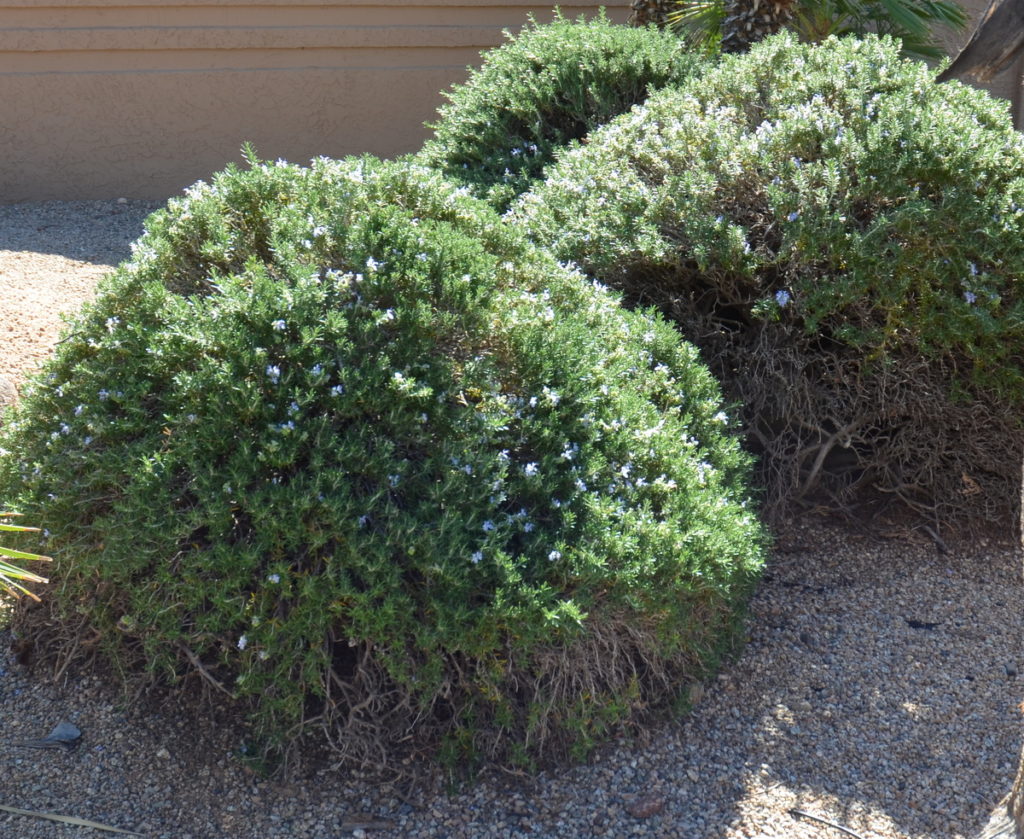
Old rosemary filled with unproductive woody growth
The Power of Severe Renewal Pruning
Dealing with overgrown plants is a common challenge for gardeners and landscapers. Understanding when to prune and when to replace is crucial for maintaining a beautiful landscape.
Not all plants respond well to severe pruning; some are better replaced altogether. Let’s discuss specific Southwestern shrubs and succulents.
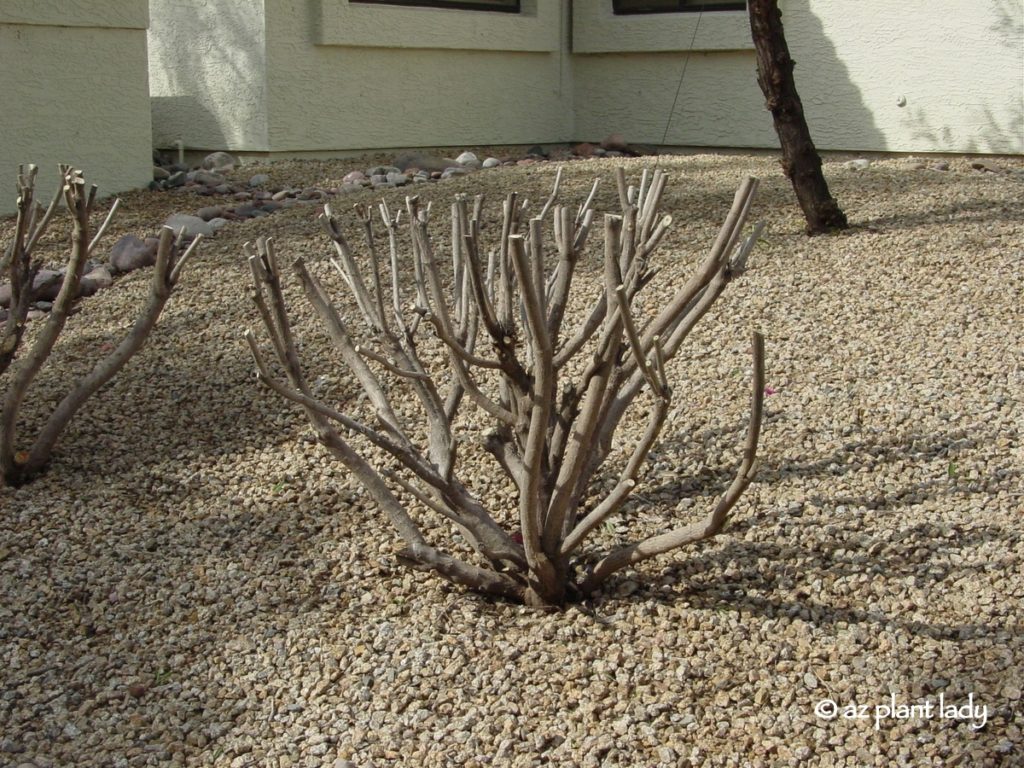
Oleander that has undergone severe renewal pruning in spring.
Springtime Rejuvenation
Many shrubs can be rejuvenated by severely pruning them back, which gets rid of old, woody growth and stimulates the production of new branches, which will flower more (in the case of flowering shrubs). It is helpful to think of severe renewal pruning as the “fountain of youth” for many plants.
This type of pruning is best done in spring, once the weather begins to warm up. Shrubs that respond well to this include bougainvillea, jojoba, lantana, oleander, Texas sage, and yellow bells. It’s important to note that not all shrubs will come back from this method, but the pruning didn’t kill the shrub – it only hastened the demise of the plant that was already in progress. If this happens, replace it with another.
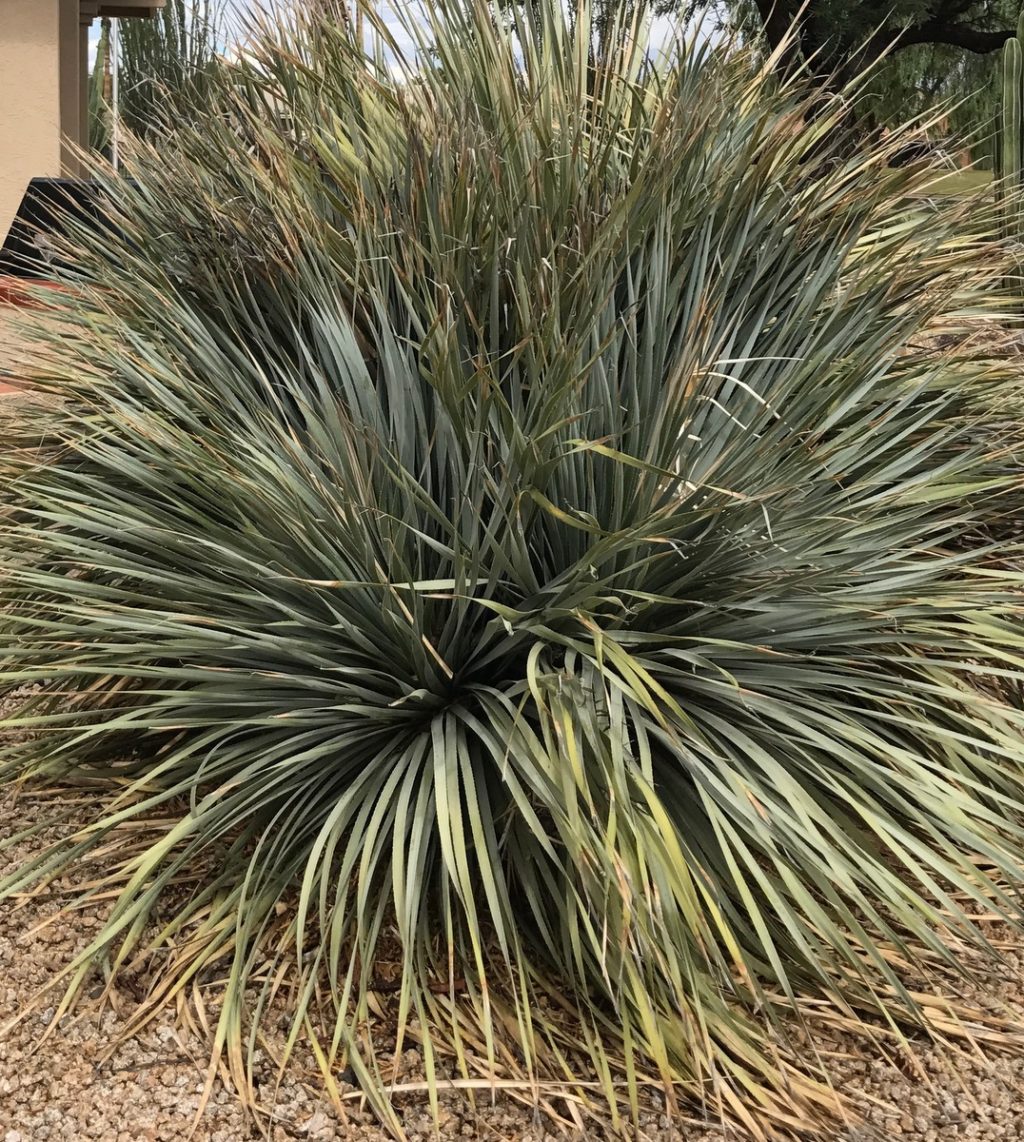
Old desert spoon (Dasylirion wheeleri)
Some Plants Do Not Like Renewal Pruning
There are some plants that don’t respond well to renewal pruning or where that isn’t possible to do in the case of succulents. In this case, the solution is simple – take them out and replace them with a younger version of the same plant. Examples of plants that are better removed and replaced include aloe, desert spoon, red yucca (hesperaloe), rosemary, and prickly pear cactus. When you think about it, the cost isn’t very high, when you consider the beauty that these plants added to your landscape for eight years or more.
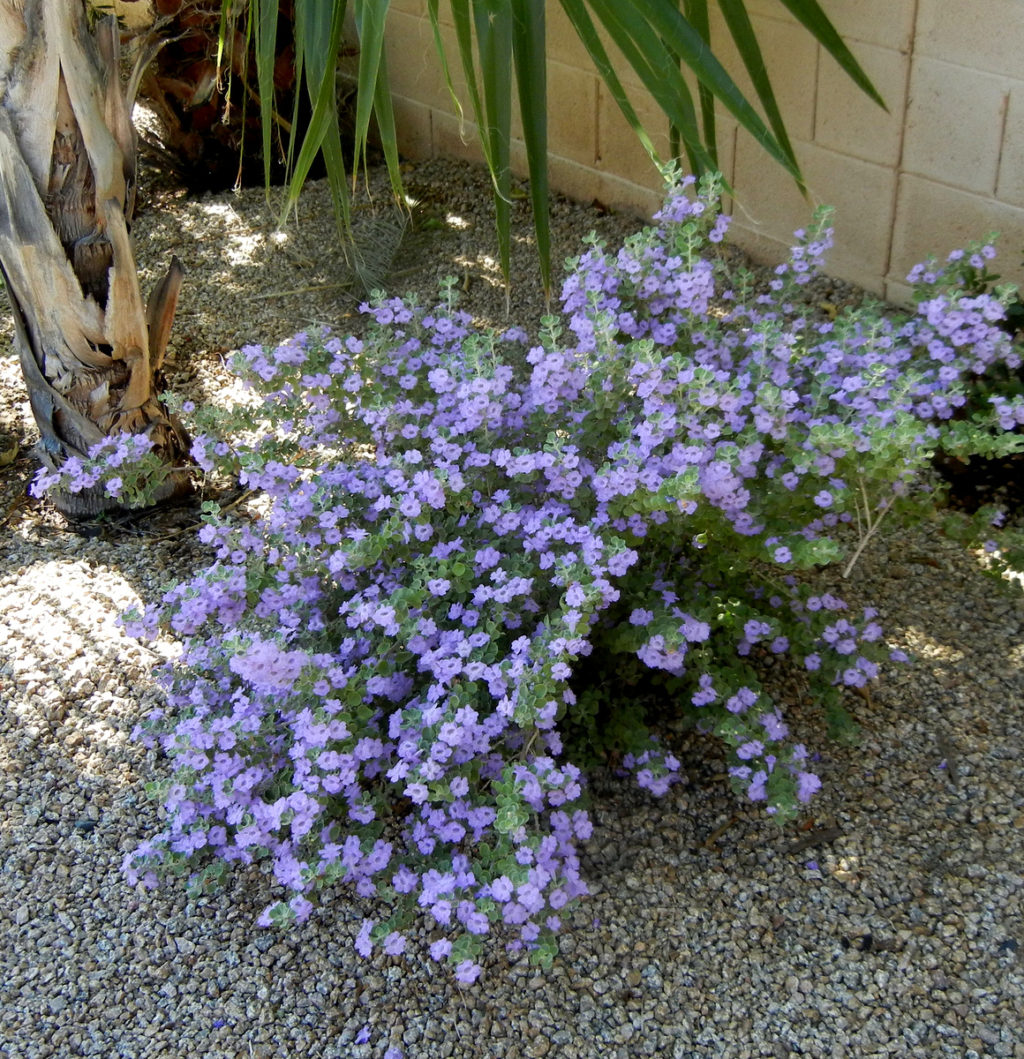
Heavenly Cloud Texas Sage several weeks after severe pruning.
Weighing the Cost and Beauty
Explore the decision-making process behind removing and replacing old succulents and shrubs in your landscape, considering the cost and the beauty they bring to your garden.
When you think about it, the cost isn’t very high, when you consider the beauty that these plants added to your landscape for eight years or more.
*Have you severely pruned back an old shrub and had it come back beautifully? Or, maybe you recently removed and replaced some old succulents?
Ready to Prune? Here Are Common Pruning Terms Defined


